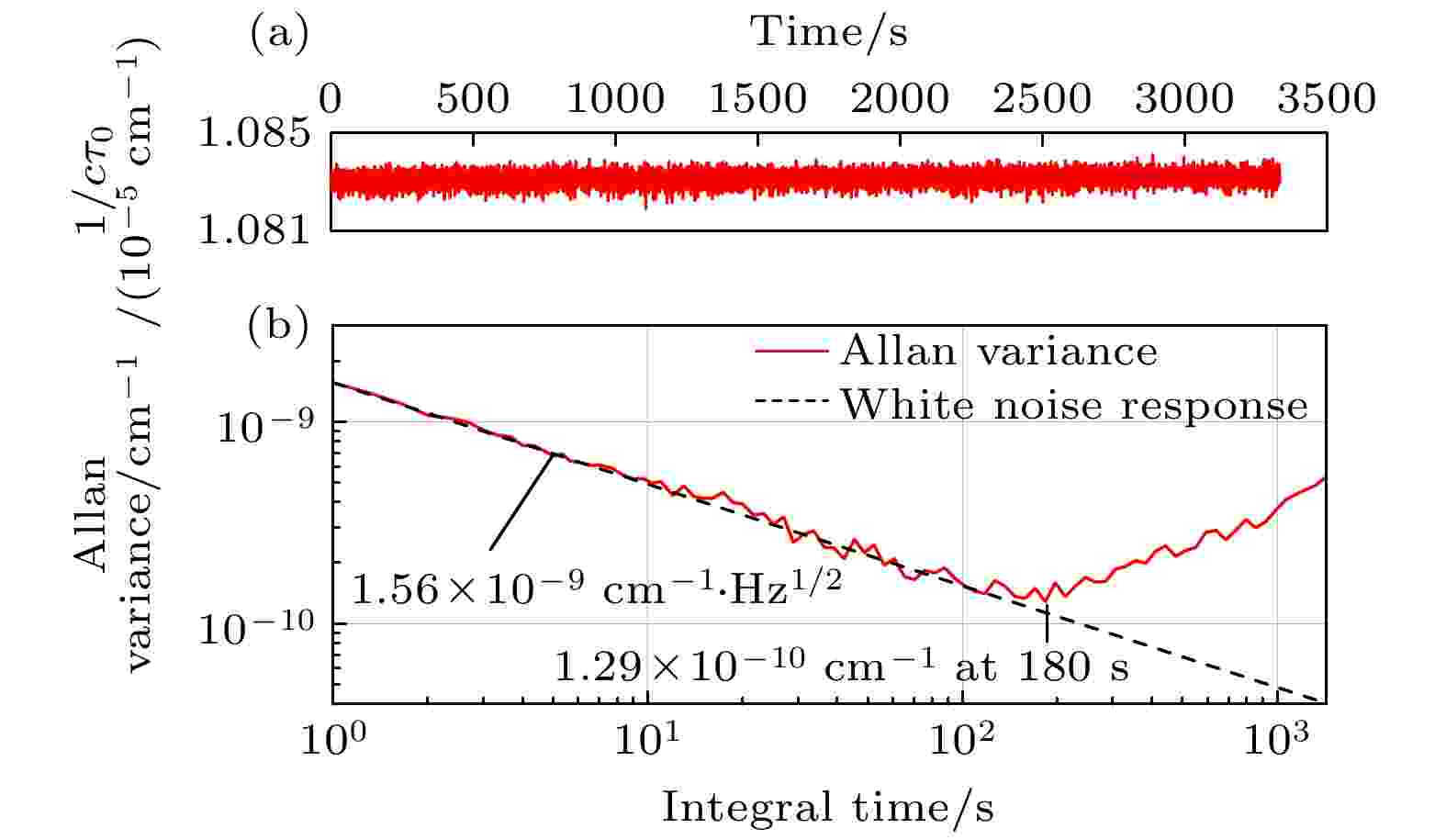Vol. 71, No. 15 (2022)
2022-08-05
INVITED REVIEW

INVITED REVIEW
2022, 71 (15): 152901.
doi:10.7498/aps.71.20220486
Abstract +
Based on the laser manipulation of electron beam, the steady-state micro-bunching (SSMB) mechanism promises an electron bunch length six orders of magnitude smaller than that in a conventional storage ring. With the combination of the strong coherent characteristic of the radiation from micro-bunching and the high repetition rate of a storage ring, high-average-power, narrow-band coherent radiation with wavelengths ranging from THz to soft X-ray can be expected from an SSMB ring. Such a novel light source can provide unprecedented opportunities for accelerator photon science and industry applications like extreme ultraviolet (EUV) lithography. In this paper, the SSMB concept and its potential, the progress of SSMB proof-of-principle experiment, the key physics issues and technical challenges of an SSMB ring, the Tsinghua SSMB-EUV light source and its potential revolutionary influence on scientific research and EUV lithography are all reviewed. Some important results of the SSMB research achieved by us are also presented.
GENERAL
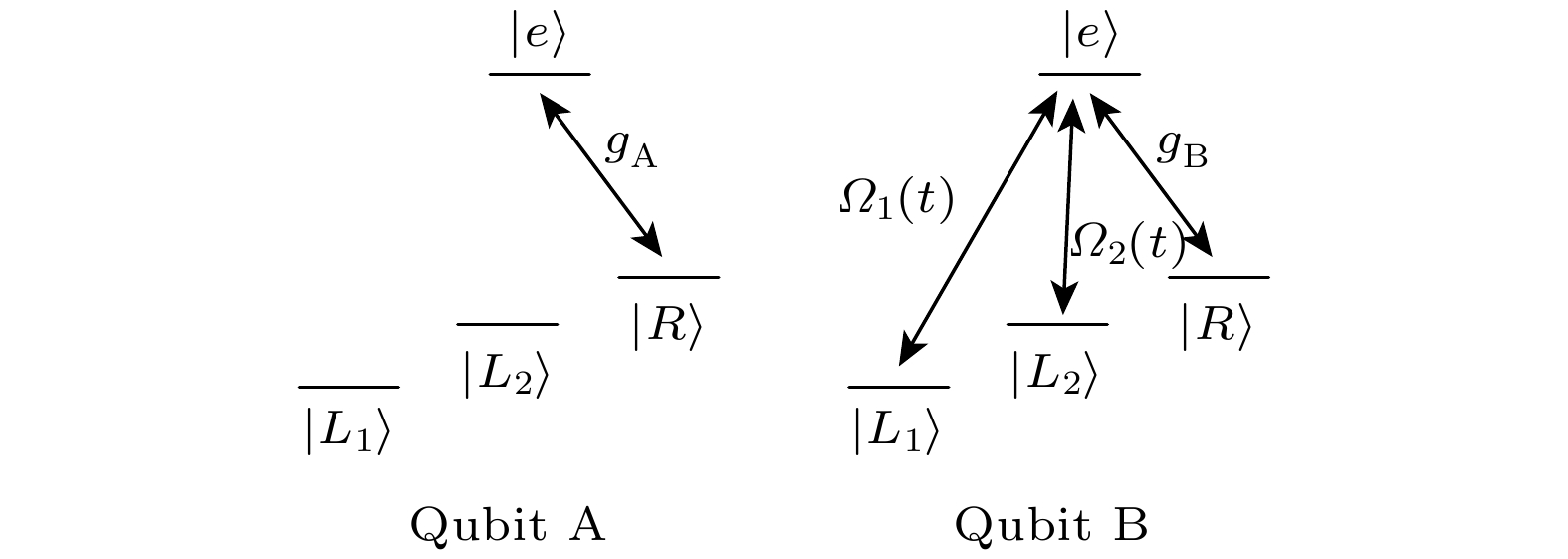
EDITOR'S SUGGESTION
2022, 71 (15): 150301.
doi:10.7498/aps.71.20220248
Abstract +
With high speed and big storage power, quantum computer has received increasing attention. The operation on the quantum computer can be composed of several single-bit and multi-bit quantum logic gates, among which the controlled phase gate is one of the essential two-qubit logic gates. Usually, the quantum gate is realized in a real physical system, and the circuit quantum electrodynamics system (QED) has become a promising candidate due to its long coherent time, easily coupled with other physical system and scaled up to large scale. In this work, we propose a scheme to fast implement a two-qubit controlled phase gate based on the circuit QED by using the superadiabatic-based shortcut, in order to solve the problem that the adiabatic algorithm needs a long time in the process of system evolution. Here, a coding strategy is first designed for the circuit QED system and the two transmon qubits, and the effective Hamiltonian of the system is then presented by dividing different initial states in the rotating-wave approximation. By using the superadiabatic-based shortcut algorithm for two iterations, a correction term in the same form as the system effective Hamiltonian is obtained through anti-diabatic driving, so that the effective Hamiltonian can suppress unwanted transitions between different instantaneous eigenstates. According to the evolution path, the appropriate boundary conditions are also obtained to complete the preparation of the controlled phase gate. The numerical simulation results show the availability of the proposed scheme, that is, the
$ - \left| {11} \right\rangle $
state can be obtained by system evolution when the initial state is
$ \left| {11} \right\rangle $
, while the system does not change at all when the other initial states are prepared. Furthermore, the controlled phase gate with high-fidelity can be obtained . It is shown that the fidelity of the controlled phase gate is stable and greater than 0.991 when the evolution time is greater than
$0.7{t \mathord{\left/ {\vphantom {t {{t_f}}}} \right. } {{t_{\rm f}}}}$
. In addition, the proposed scheme can accelerate the evolution and is robust to decoherence. By the resonator decay and the spontaneous emission and dephasing of qubit, the final fidelity of the controlled phase gate is greater than 0.984. Since the controlled phase gate does not need additional parameters, the propsoed scheme is feasible in experiment.
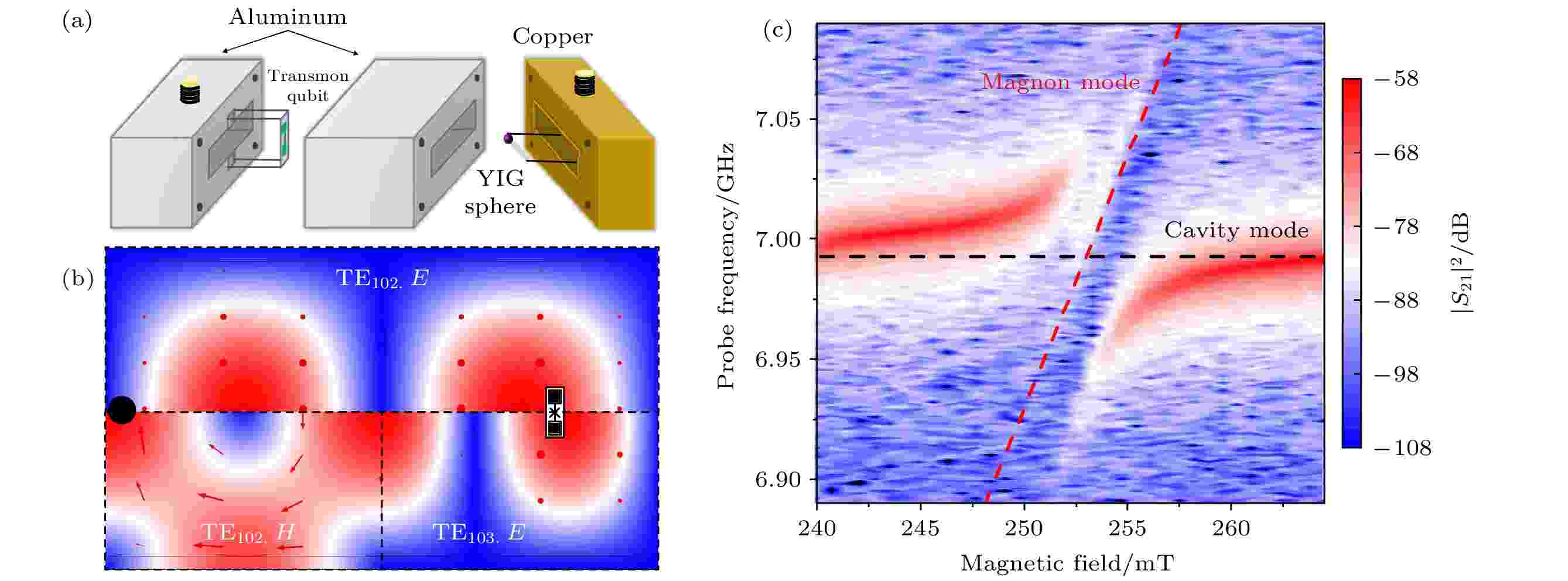
EDITOR'S SUGGESTION
2022, 71 (15): 150302.
doi:10.7498/aps.71.20220260
Abstract +
We experimentally demonstrate the strong coupling between the ferromagnetic magnons in an yttrium-iron-garnet (YIG) sphere and the drive-field-induced dressed states of a superconducting qubit, which gives rise to the double dressing of the superconducting qubit. The YIG sphere and the superconducting qubit are embedded in a microwave cavity, and are coupled to the magnetic and electrical fields of the cavity
$\mathrm{TE}_{102}$
mode, respectively. The effective coupling between them is mediated by the virtual cavity photons of cavity
$\mathrm{TE}_{102}$
mode. Our experimental results indicate that as the power for driving the qubit increases, an additional split of the qubit-magnon polariton occurs. These supplemental splittings indicate a double-dressed state. We theoretically analyze the experimental results by using a particle-hole symmetric model. The theoretical results fit the experimental observations well in a broad range of drive-field power parameters, revealing that the driven qubit-magnon hybrid quantum system can be used to emulate a particle-hole symmetric pair coupled to a bosonic mode. Our hybrid quantum system holds great promise for quantum simulations of composite quasiparticles consisting of fermions and bosons.

2022, 71 (15): 150303.
doi:10.7498/aps.71.20220158
Abstract +
Quantum satellite communication is a research hotspot in the field of quantum communication, which has the characteristics of wide coverage, high communication efficiency and strong security. The construction strategy of the quantum communication network is an essential part of quantum communication. However, the construction strategy of quantum air communication network has not been studied yet so far. In this paper, according to the characteristics of flying goose array and principle of bionics, a simulated wild goose group Λ quantum air communication network topology is proposed, which can be divided into single-head node Λ type and multi-head node Λ type. Based on Greenberger-Horne-Zeilinger (GHZ) state particles, a certifiable QSDC inter-network communication system and a GHZ-EPR quantum teleportation communication system are established. The bit error rate, energy consumption, throughput, and other parameters are studied. After theoretical analysis and experimental measurement, for the single-head node Λ network structure in the environment where the average power spectral density of noise is 2 dB/m, when the communication distance between the head node and the child node is less than 400 m, the bit error rate is less than 0.094; if the communication distance increases from 400 m to 1000 m, the bit error rate increases rapidly, reaching 0.585; when the number of child nodes on one side increases from 2 to 7, the throughput decreases from 110.6 kb/s to 46.45 kb/s. For example, when the total number of nodes is 21, the single-head node Λ network structure saves 32.6% energy but reduces the throughput to 23.9 kb/s. By comparison, the multi-head node Λ network structure with 21 nodes saves 29.3% energy and achieves throughput of 163.4 kb/s. The above studies show that the quantum air network with the structure of imitation goose group array has good network scalability, excellent information security and flexible network structure.
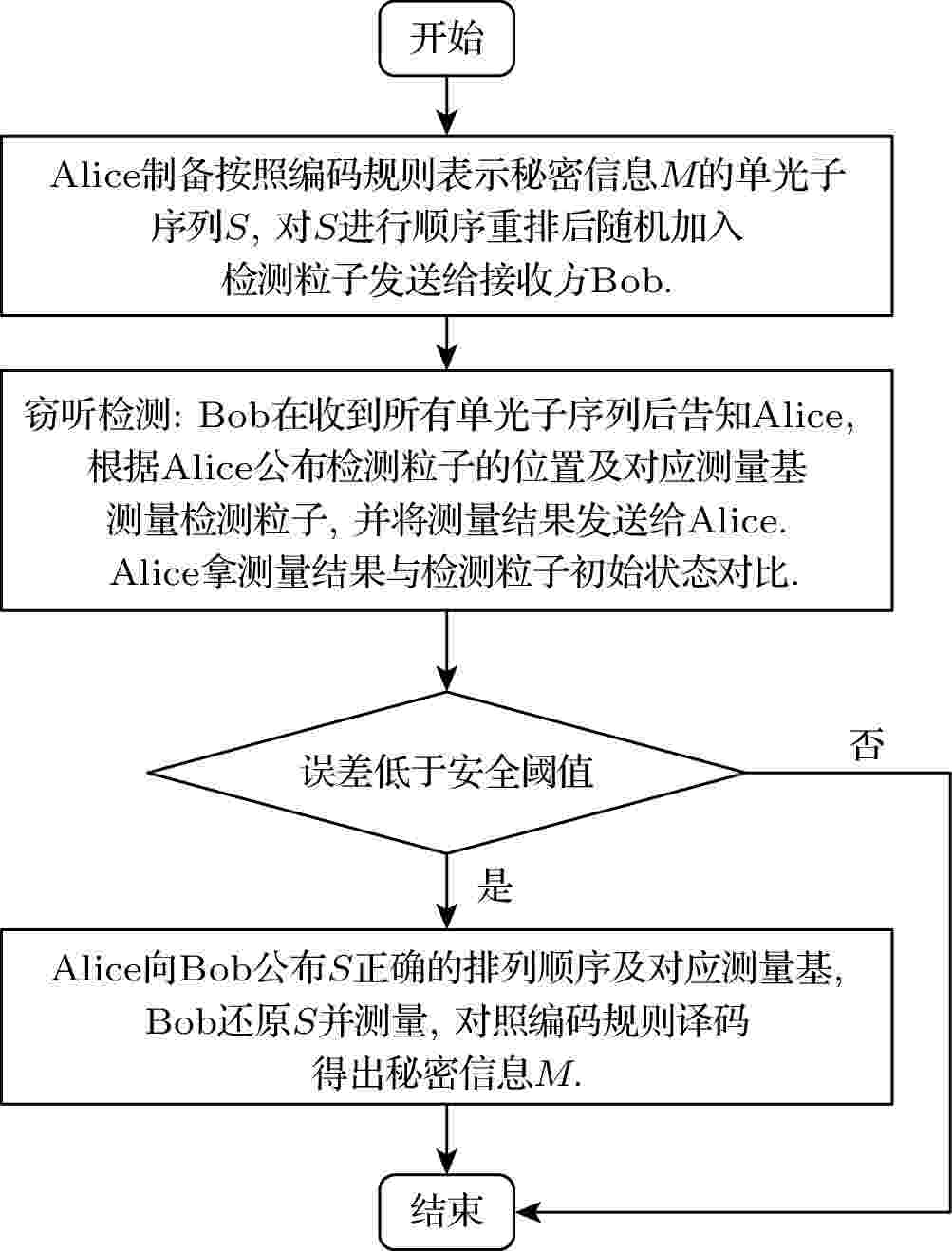
2022, 71 (15): 150304.
doi:10.7498/aps.71.20220202
Abstract +
In this work, we first introduce the specific steps of a quantum-secure direct communication scheme that sends a single photon at a time. Based on the basic steps of the scheme, it is gradually extended to a quantum secure direct communication scheme that transmits single-photon sequences twice and four times, with emphasis on the coding rules corresponding to each scheme. The purpose is that through the above scheme, it can be intuitively seen in the subsequent efficiency analysis that with the increase of the number of transmissions, the classification of single photons can be increased, and the encoding capacity of each single photon and the transmission efficiency of quantum states in the entire communication can be greatly improved. Finally, a universal scheme and coding rules for quantum secure direct communication by sending single photons in an integer power of 2 are proposed, and after security analysis the scheme proves to be safe and feasible. Through the efficiency analysis, the communication efficiency of this scheme is higher than that of the existing scheme, and the implementation of this scheme only uses a single photon, does not involve with quantum entanglement, and this scheme has more application values.
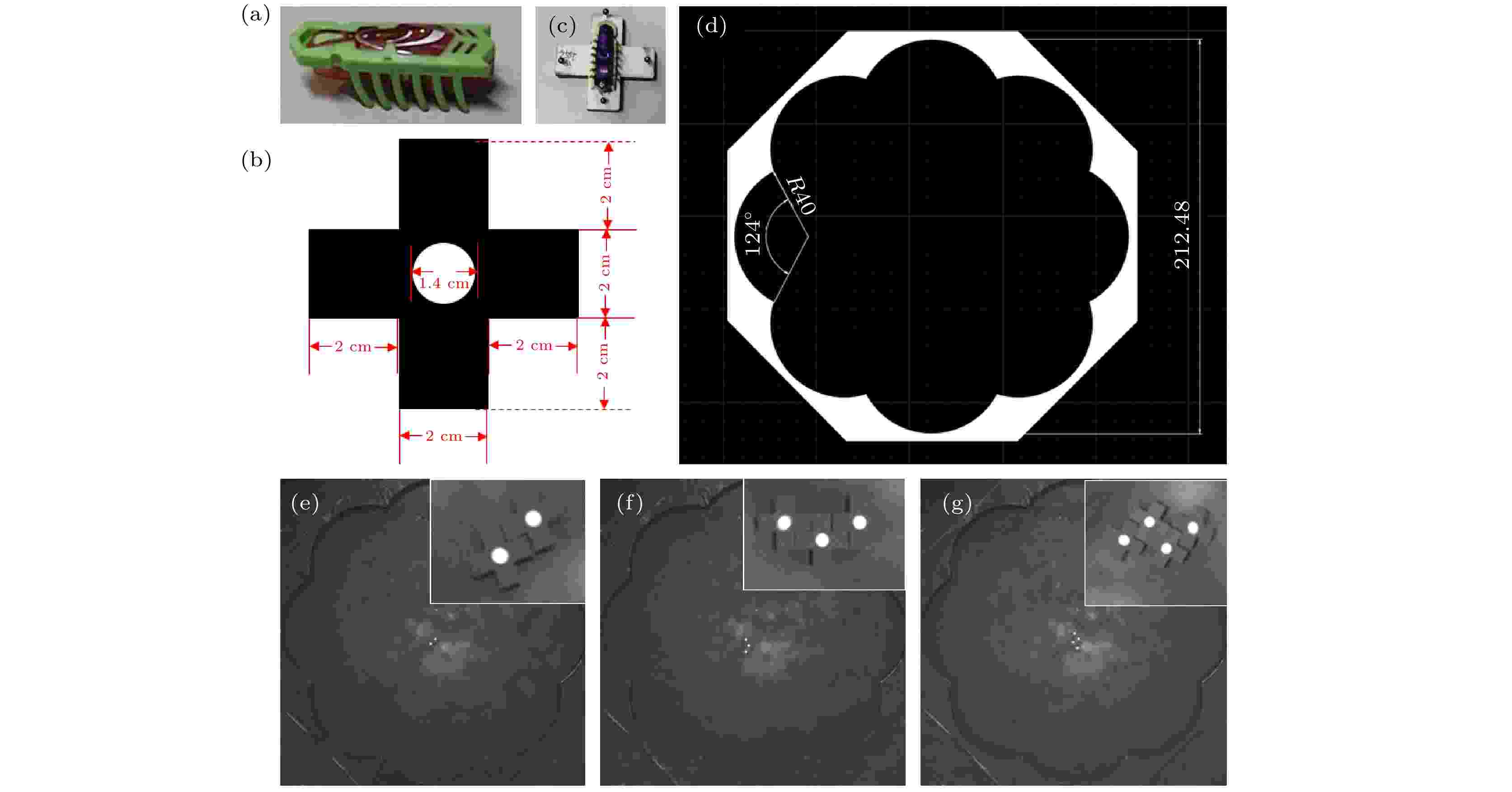
2022, 71 (15): 150501.
doi:10.7498/aps.71.20212385
Abstract +
In recent years, active matter has attracted tremendous research interest. Active matter displays many phenomena, such as super-diffusion, huge fluctuation and collective motion. The shape of active agent plays a critical role in the self-assembly of active matter. Understanding the oligomers’ dynamics of active agents is the first step to study the self-assembly of massive agents. Here, we design a self-properlling particle with the “十” shape using the Hexbug robot and investigate the dynamics of oligomers composed of these particles. To track the position of particles, the top of the particles is marked by black cards with white dots in the center. We find that these particles can agglomerate together to form stable oligomers consisting of two, three, or four particles. We study the dynamics by analyzing the trajectory, mean-square displacement, angular velocity, angular velocity distribution and the curvature distribution. We find that the dynamics can be divided into two types. One is the combination of eccentric rotation with small circular radius and irregular translation, which occurs in the system with the zero resultant force and nonzero torque. The other is the eccentric rotation with a large circular radius, which appears in the system in which both the resultant force and torque are not zero. In addition, we find that the translational dynamics of oligomers displays a super diffusion on a short time scale, influenced by the confirguration of oligomers. Further, the larger torque and the smaller moment of inertia result in the bigger angle speed of oligomers. Moreover, we investigate the curvature distribution of the trimer and find that the faster the angle speed of the trimer, the bigger its curvature is.
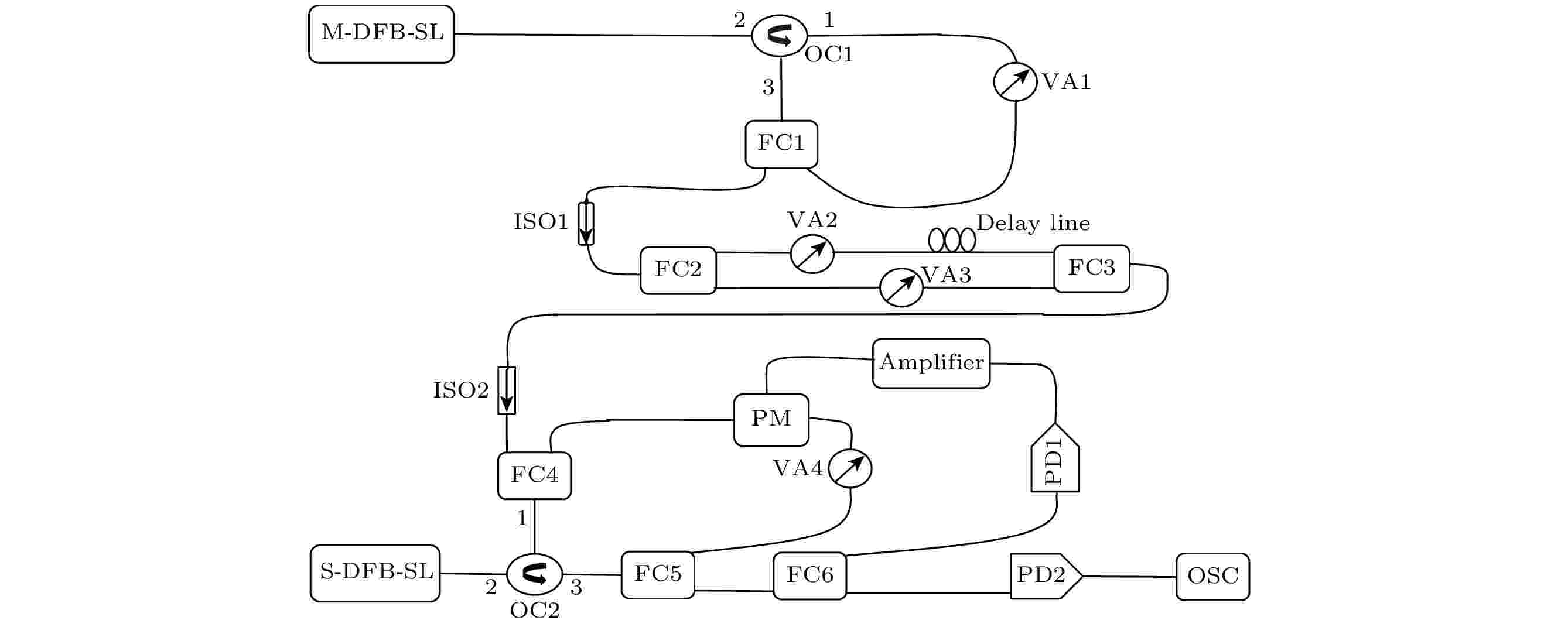
2022, 71 (15): 150502.
doi:10.7498/aps.71.20220204
Abstract +

2022, 71 (15): 150701.
doi:10.7498/aps.71.20220191
Abstract +
By constructing an optorotational system composed of two linearly coupled Laguerre-Gaussian rotational cavities, we realize the nonreciprocal transmission of the vortex beam with the orbital angular momentum. Two vortex beam cavity modes driven by strong fields are coupled with a rotational mirror via the torsion, and two cavity modes interact with each other via the optical fiber. A weak probe field is incident from one side of the system for examining the optical response along one propagating direction. With the Hamiltonian of the system and the Heisenberg-Langevin equation, we can obtain the transmission of the output light field from the input-output theory. The result shows that the optical nonreciprocity of the vortex beam arises from the quantum interference between the optorotational interaction and the linear coupling interaction between two vortex beam modes, and the phase difference can be used to adjust the optical nonreciprocity. The phase difference can determine not only the occurrence of the nonreciprocity but also the direction of nonreciprocity. Moreover, the ratio of the topological charges carried by the two vortex beam fields has an influence on the transmission. Under an appropriate topological charge ratio, the unidirectional transmission of the vortex beam can be realized in such a system. It is found that whether the topological charge ratio is positive or negative, i.e. whether the vortex beam is left-hand beam or right-hand beam, does not affect the transmission; the influence of the topological charge on the transmission amplitude actually comes from the topological charge number carried by the vortex beam, due to the fact that the coupling strength between the rotating mirror mode and the cavity mode depends on the topological charge number. In addition, we also obtain the condition that the system damping rates should meet for realizing the perfect nonreciprocal propagation of the vortex beam. Finally, we can achieve the nonreciprocal group velocity of the slow light. The direction of the nonreciprocal slow light can be controlled via phase modulation. Our work provides a possible application in manipulating the vortex beam propagation. Furthermore, we extend the nonreciprocity of ordinary beams in the optomechanical system to the nonreciprocity of the vortex beam in the optorotational system. The results are expected to be applied to fabricating the ideal optical isolators for the vortex beam carrying the orbital angular momentum in optical communication.
NUCLEAR PHYSICS
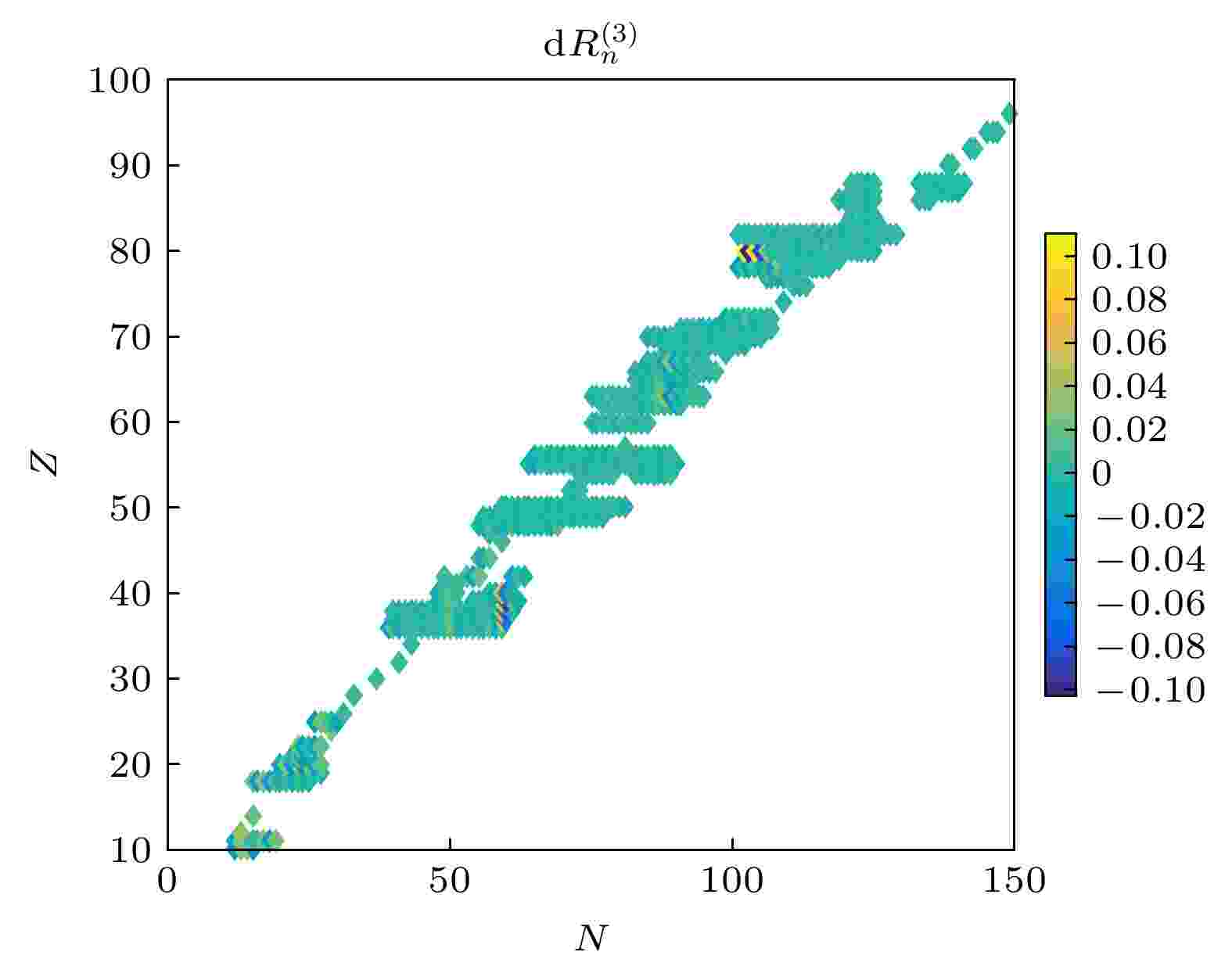
2022, 71 (15): 152101.
doi:10.7498/aps.71.20212343
Abstract +
In this paper, experimental values of nuclear charge radii in database published in 2013 (CR2013 database) are systematically investigated. We analyze the relationship among the three neighboring nuclei based on the nuclear charge radius of isotope chain in the database. Then we obtain a new nuclear charge radius relation for atomic nuclei: the charge radius of a given nucleus is equal to the average of the charge radii of its two neighboring nuclei. We calculate the nuclear charge radius by combining the new relation with CR2013 database, the root-mean-squared deviation (RMSD) between our calculated values and the experimental values in CR2013 database is small: for nuclei withA
$\geqslant$
20 (proton numberZ
$\geqslant$
10 and neutron numberN
$\geqslant$
10), the RMSD
$\approx$
0.00471 fm; for nuclei withA
$\geqslant$
54, the RMSD reaches an accuracy of RMSD
$\approx$
0.00337 fm. The systematicness of nuclear charge radius in heavy nucleus region is better than that in the light nucleus region, so that the values are more precise in the heavy nucleus region. In the meantime, we also use the odd-even staggering to improve the accuracy of nuclear charge radius: the accuracy increases by about 6.8%. In addition, according to the CR1999 and CR2004 database and the new relation, we make some predictions about some nuclear charge radii, and we find that our predicted values only slightly deviate from the experimental values in CR2013 database. The difference between our predicted value based on CR2013 database and experimental value measured in recent years is small. These results show that the proposed new relation used to study nuclear charge radius is feasible and accurate. The predicted values can provide a valuable reference for future experiments.
ATOMIC AND MOLECULAR PHYSICS
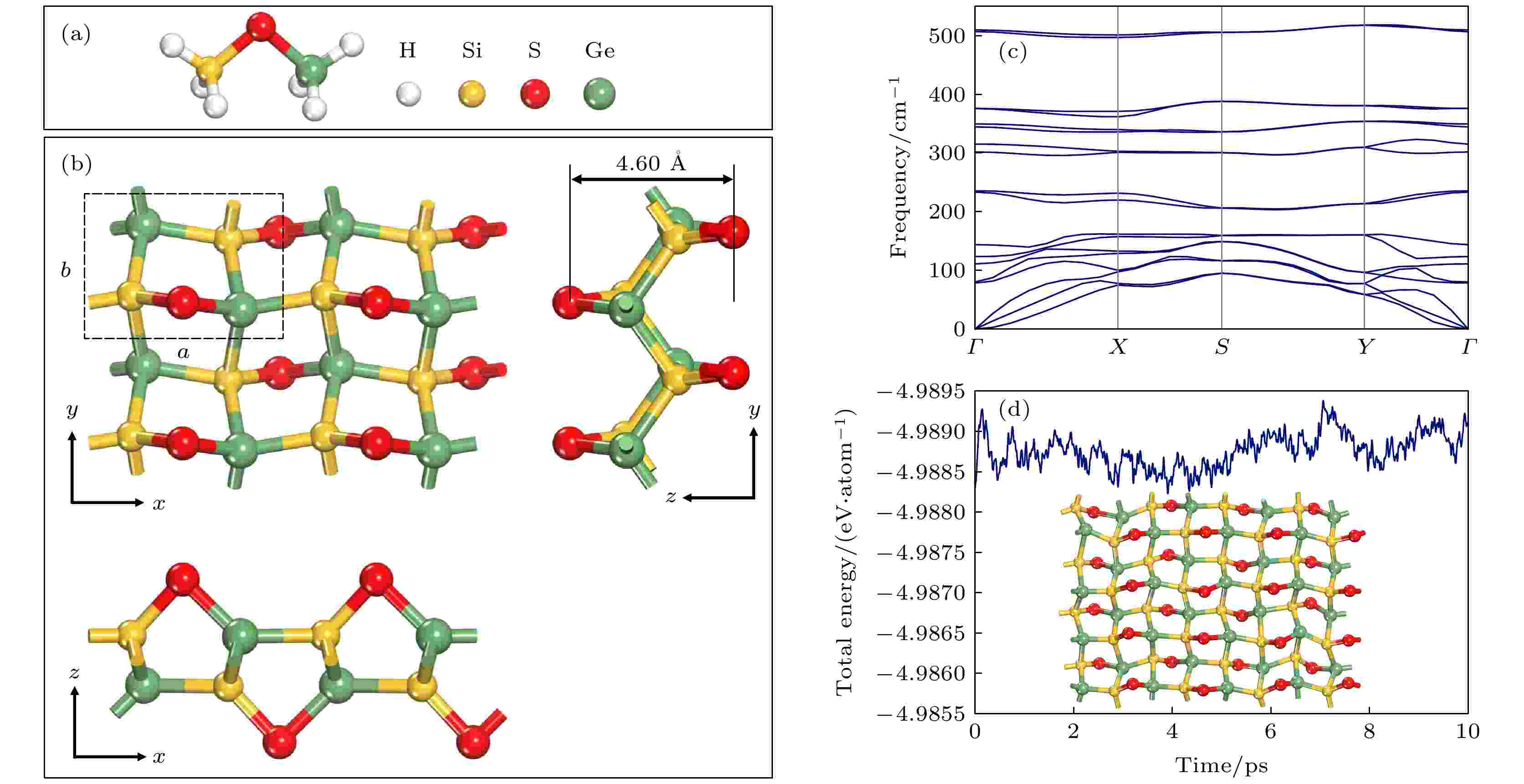
2022, 71 (15): 153101.
doi:10.7498/aps.71.20220407
Abstract +
Two-dimensional (2D) materials have aroused tremendous interest due to their great potential applications in electronic, optical, and mechanical devices. We theoretically design a new 2D material SiGeS by regularly arranging the Si-S-Ge skeleton of SiH3SGeH3. Based on first-principles calculation, the structure, stability, electronic properties, mechanical properties, and optical properties of SiGeS are systematically investigated. Monolayer SiGeS is found to be energetically, dynamically, and thermally stable. Remarkably, the SiGeS displays a unique negative Poisson’s ratio. Besides, the SiGeS is an indirect-semiconductor with a band gap of 1.95 eV. The band gap can be modulated effectively by applying external strains. An indirect-to-direct band gap transition can be observed when the tensile strain along thexaxial or biaxial direction is greater than +3%, which is highly desirable for applications in optical and semiconductor technology. Moreover, pristine SiGeS has a high absorption coefficient (~105cm–1) in a visible-to-ultraviolet region. Under tensile strain along thexaxial direction, the absorption edge of SiGeS has a red shift, which makes it cover the whole region of solar spectrum. These intriguing properties make the SiGeS a competitive multifunctional material for nanomechanic and optoelectronic applications.
ELECTROMAGNETISM, OPTICS, ACOUSTICS, HEAT TRANSFER, CLASSICAL MECHANICS, AND FLUID DYNAMICS
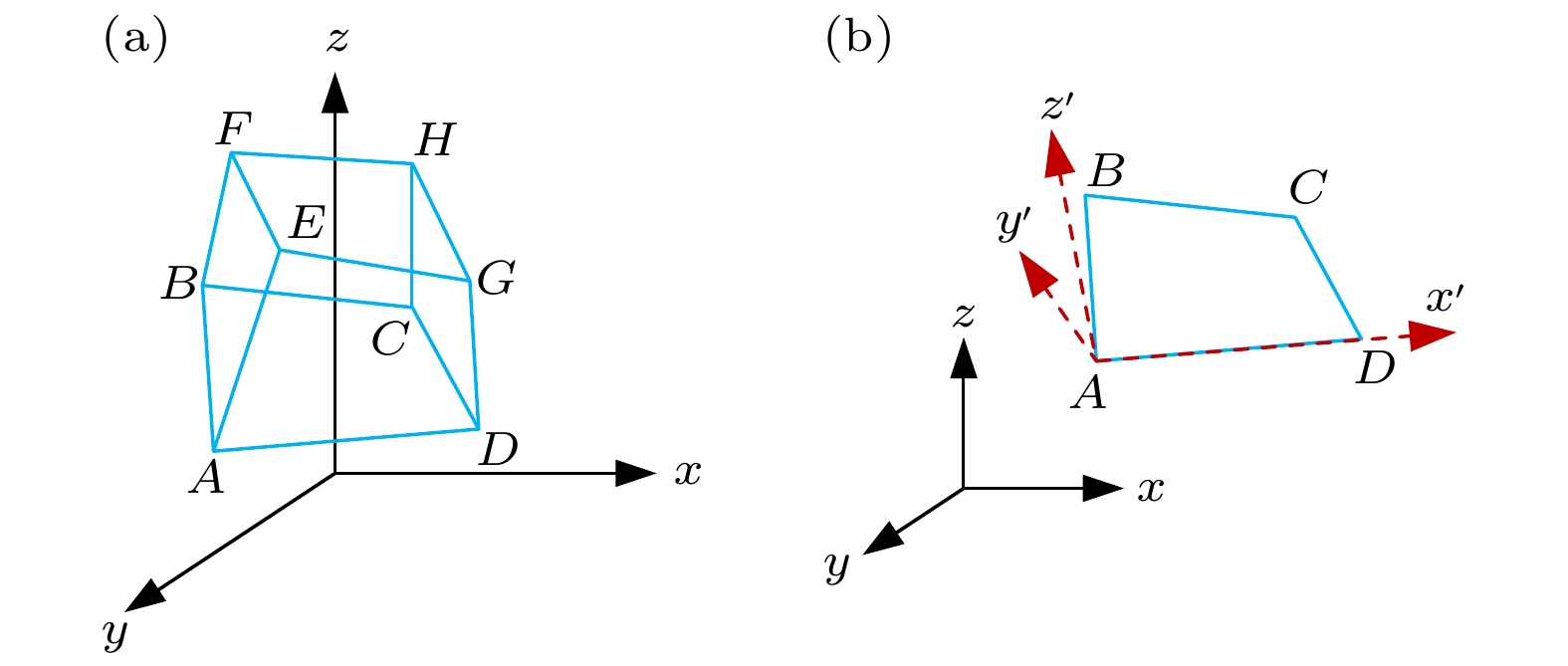
2022, 71 (15): 154101.
doi:10.7498/aps.71.20220176
Abstract +
The magnetic dipole theory has been widely and successfully used to qualitatively analyze the testing signals of metal magnetic memory (MMM) testing. However, the magnetic charge density of the existing models is always an assumed value distributed uniformly or linearly along the defect section or in a stress concentration area, as a result the existing models are unsuitable for quantitatively analyzing the metal magnetic memory signal. In this work, a new forward model of MMM testing is established by considering the influence of uneven stress on magnetic charge density distribution, discretizing the specimen into numbers of micro elements firstly, assuming that the magnetic characteristic parameters of each element are evenly distributed and the magnetic charge density changes with stress in each element which can be determined by combining the modified magneto-mechanical model and the classical theory of magnetic charges. Compared with the experimental results of hole defect and crack defect specimen, the theoretical results calculated by the proposed model prove to be in good agreement with the testing results both qualitatively and quantitatively. Consequently, the proposed model is a new theoretical and quantitative model for analyzing the experimental change rule of metal magnetic memory testing. Then, the effects of stress concentration and macroscopic defects on the distribution of magnetic field are analyzed, showing that when there is only a stress concentration in the specimen, the horizontal component is negative valley, and the normal component changes from negative to positive valley peak in the stress concentration area; when there is a crack defect in the specimen, the distribution of magnetic field is just opposite to that when there is only a stress concentration. The distribution characteristics of the magnetic field can be used to judge the damage type in the specimen. Moreover, taking crack defect for example, the horizontal and normal component of magnetic field and their characteristic parameters changing with the size parameters of crack defect, such as width, length, depth and buried depth of crack defect, are analyzed in detail. The results show that the
${W_{\Delta {H_x}}}$
and
${W_{\Delta {H_z}}}$
increase lineally with the increase of the width of crack,
$\Delta {H_x}$
and
$\Delta {H_z}$
increase with the increase of the length and depth of crack, but gradually decrease with the increase of defect buried depth.
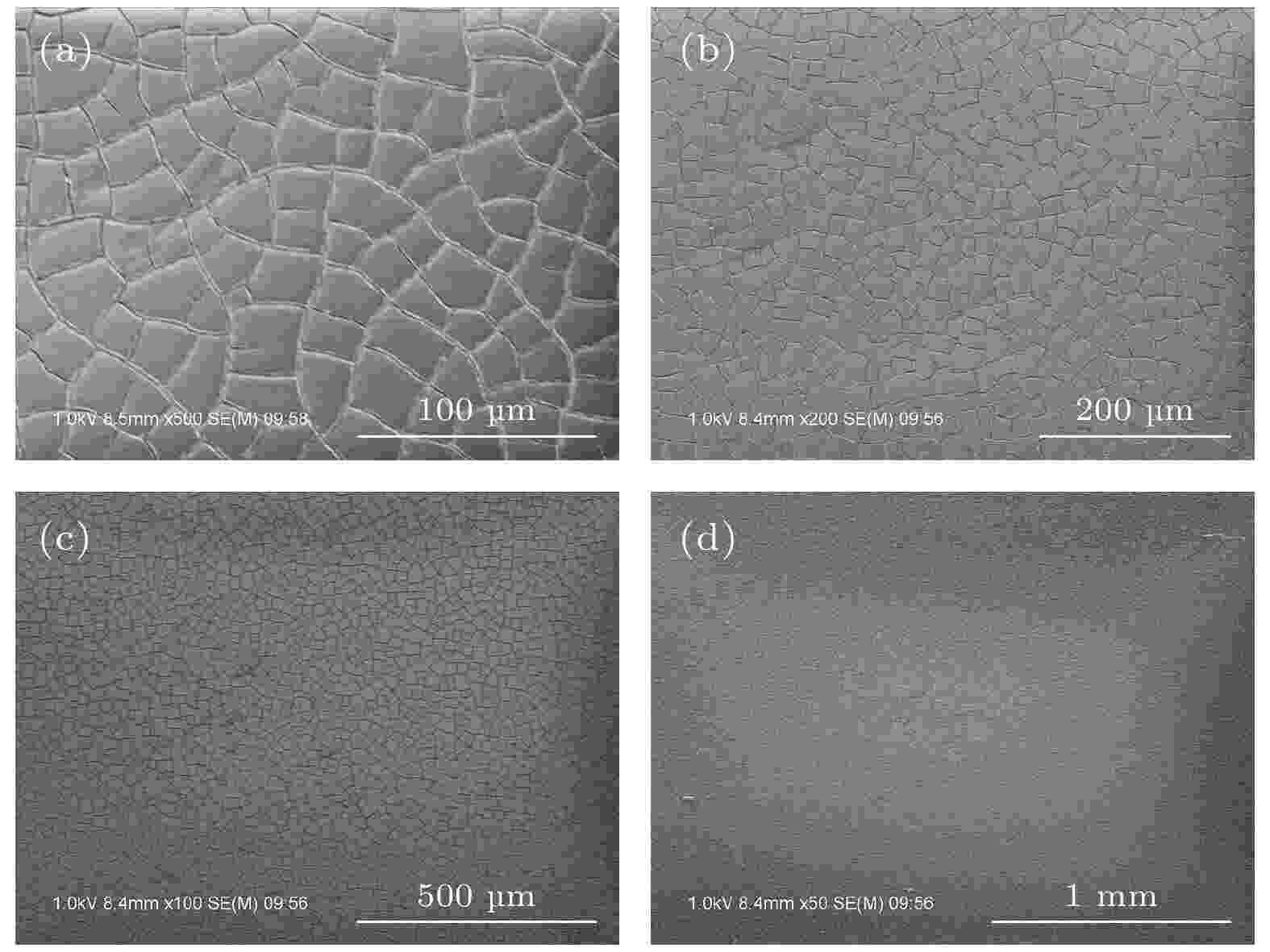
2022, 71 (15): 154201.
doi:10.7498/aps.71.20220101
Abstract +
A metal mesh transparent conductive film with high shielding performance is prepared based on the crack template method. The shielding performance of the metal mesh transparent conductive film prepared by the existing crack template method needs improving due to the thin thickness of the metal mesh. In this work, the crack depth factor is added to the distribution curve of the relationship between the spin coating speed of the cracked material and the crack pattern, and the appropriate crack material and spin coating scheme are selected to prepare an ideal crack template with random pattern distribution. A metal layer with a thickness of 1 μm is deposited inside and outside the crack template gap by magnetron sputtering, and the method of ultrasonic cleaning combined with organic solvent is introduced to efficiently remove the crack glue template, and a metal mesh transparent conductive film sample is obtained. The measured light transmittance of the metal mesh transparent conductive film sample exceeds 85% while the square resistance value remains around 2.8 Ω/□, which has good light transmittance and electromagnetic shielding performance. The shielding performance is improved by preparing thickened metal mesh transparent conductive films, which provide a reference for the subsequent preparation of metal mesh transparent conductive films with high shielding performance based on the crack template method.

2022, 71 (15): 154202.
doi:10.7498/aps.71.20220455
Abstract +
When white light laser is focused on liquids, colorful interference rings with different shapes, i.e. “coherent rainbows” can be seen. The formation mechanism of such coherent rainbows is described as follows. The laser heating changes the local temperature distribution of the liquid, which affects the refractive index locally and thus the optical path difference, i.e. thermal lens effect which may cause the laser to go off at large angles. The curvature of the laser wavefront and the convection and bubbles in the liquid can also play some roles as reported here. The wave front curvature results in the asymmetry of the coherent rainbows in the near of the focal point because the wave front curvature in front of the focal point is negative and the wave front curvature in the rear of the focal point is positive. The coherent rainbow has an oval shape with up-down asymmetry because convection in the locally heated liquid leads to an asymmetric temperature distribution. We construct a function including wave front curvature and thermal lens effect, and obtain the relationship between the size of the coherent rainbows and the position of the sample. As a result of the liquid instability induced by the laser heating, the temperature distribution in the liquid is no longer axisymmetric, thus, the focal length of the transverse and longitudinal thermal concave lens are no longer the same. The fitting results accord well with the experimental observations that the coherent rainbows change faster (slower) in front of (rear) the focal point and the longitudinal and transverse dimension of the coherent rainbow are different. Many tiny bubbles are generated in water in the center of the laser beam, forming a local “black barrier” which explains the observation that there are diffraction rings and Poisson-type bright spots in the dark area of the coherent rainbows. The coherent rainbows can be observed in many liquids where the shape and number of rings of coherent rainbows depend on liquid properties such as density, viscosity and thermal conductivity.
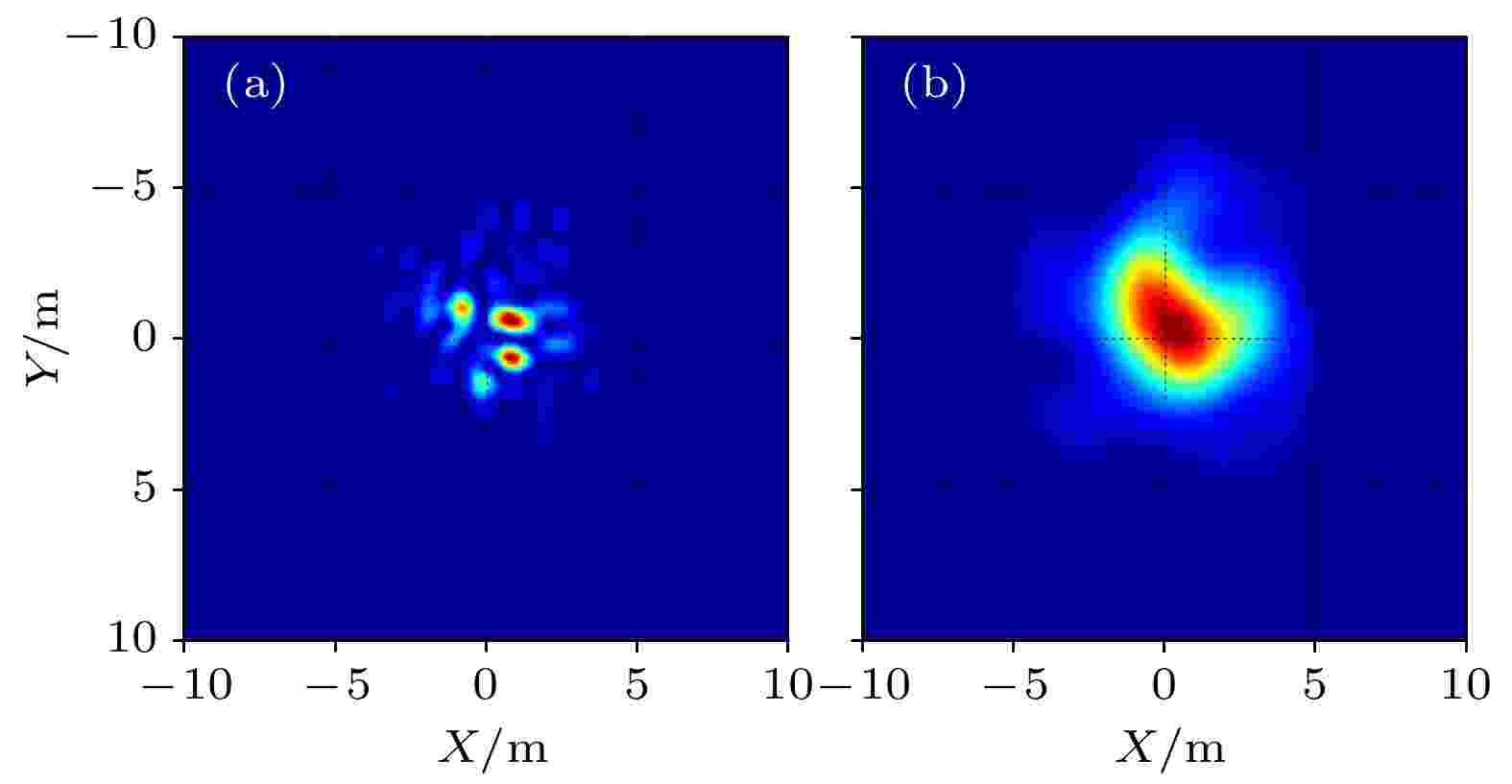
2022, 71 (15): 154203.
doi:10.7498/aps.71.20220420
Abstract +
Active illumination with narrow spectrum laser based on ladderlike phase modulator (LPM), is an effective method to improve the illumination uniformity. Laser spectrum style, lens number of LPM, and lens thickness error of LPM are three significant factors influencing the illumination uniformity in engineering. The laws of the three factors with scintillation indexes are analyzed through numerical simulation. The results indicate that the laser spectrum style is not an important factor, and the spatial scintillation index of uniformity, Gauss, Lorenz style narrow spectrum laser are 0.27, 0.28, and 0.28 respectively. The scintillation indexes decrease gradually with the lens number of LPM increasing. The spatial scintillation index increases from 0.266 to 0.271, when the lens thickness error of LPM is –0.6 mm. Therefore, several ideas are proposed: when this method is used in the engineering project, some attention should be paid to laser spectrum style, the lens number of LPM should be optimized by considering the laser spectrum width and scintillation index synchronously, and the negative error of optical lens thickness gradient of LPM should be controlled attentively.
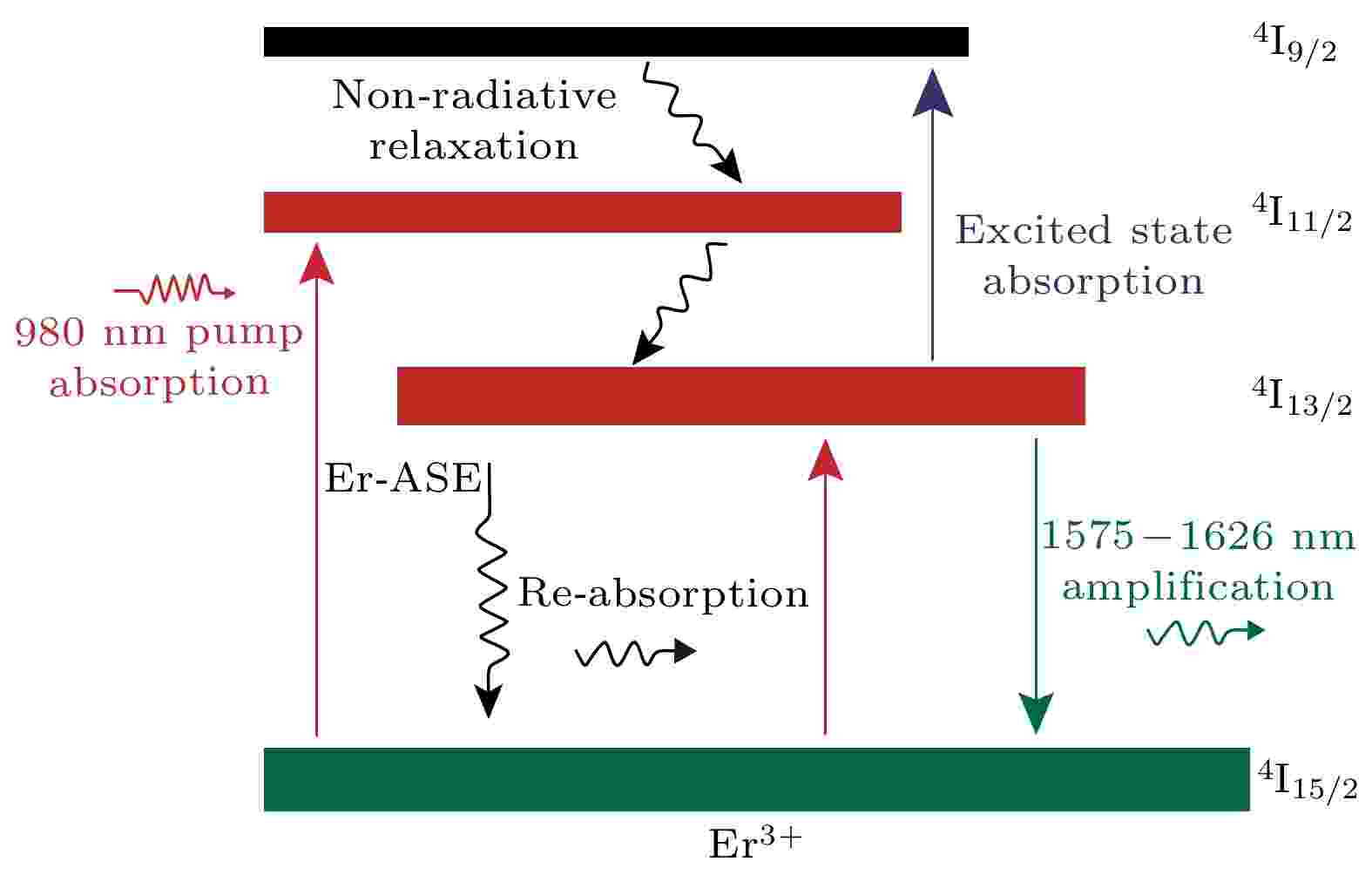
2022, 71 (15): 154204.
doi:10.7498/aps.71.20220503
Abstract +
With the continuous development of mobile internet, cloud computing, Internet of things, and 5G, the annual growth rate of the existing communication transmission capacity is far from meeting the growing demand. The gain bandwidth of L-band erbium-doped fiber amplification (EDFA) has become the main factor for limiting the bandwidth extension. Owing to its negative effect on the gain and noise figure after 1580 nm, the excited state absorption (ESA) is regarded as a key factor that directly limits the L-band expansion of EDFA. If the ESA coefficient has the same value as the stimulated emission coefficient, the net gain coefficient becomes zero. At the same time, signal amplification cannot be obtained no matter how the pump power and fiber length are adjusted. Improvements from the perspective of erbium-doped fibers, such as changing the host glass and doping components, are extremely beneficial to L-band extension based on simple amplifier configurations. In the present study, an erbium-doped fiber extended to the L-band is fabricated by the modified chemical vapor deposition technology. The saturation curve of the fiber is measured, and then the rate of clustering is obtained. In addition, the absorption coefficient and emission coefficient of the fiber are tested by the truncation method, then the effect of ESA is studied. We demonstrate that modulating the ratio of P to Al in the fiber core has a significant inhibitory effect on the ESA of Er3+. To better characterize the amplification performance of the fiber, a single-stage and a multi-stage amplifier system are built respectively. At an input signal injection with a power value of –9 dBm, the fiber exhibits a gain of 10.5 dB with a maximum noise figure of 5.9 dB at 1625.3 nm, based on a single-stage amplifier system under a 980 nm forward-pumping excitation. It indicates that the amplification performance of the fiber in the long-wavelength has improved, which is consistent with the conclusion of the suppression effect on the ESA. By optimizing the fiber length for the first, second and third stage to 19 m, 26 m and 10 m, respectively, a gain of 23.4 dB is obtained at the longest wavelength. The maximum noise figure is 6.3 dB, and the saturation output power is 24.8 dBm. In the meantime, the pump conversion efficiency arrives at 13%. This is the first report on the L-band extended silicate-based erbium-doped fiber that can achieve long-wavelength gain extension to 1625.3 nm.
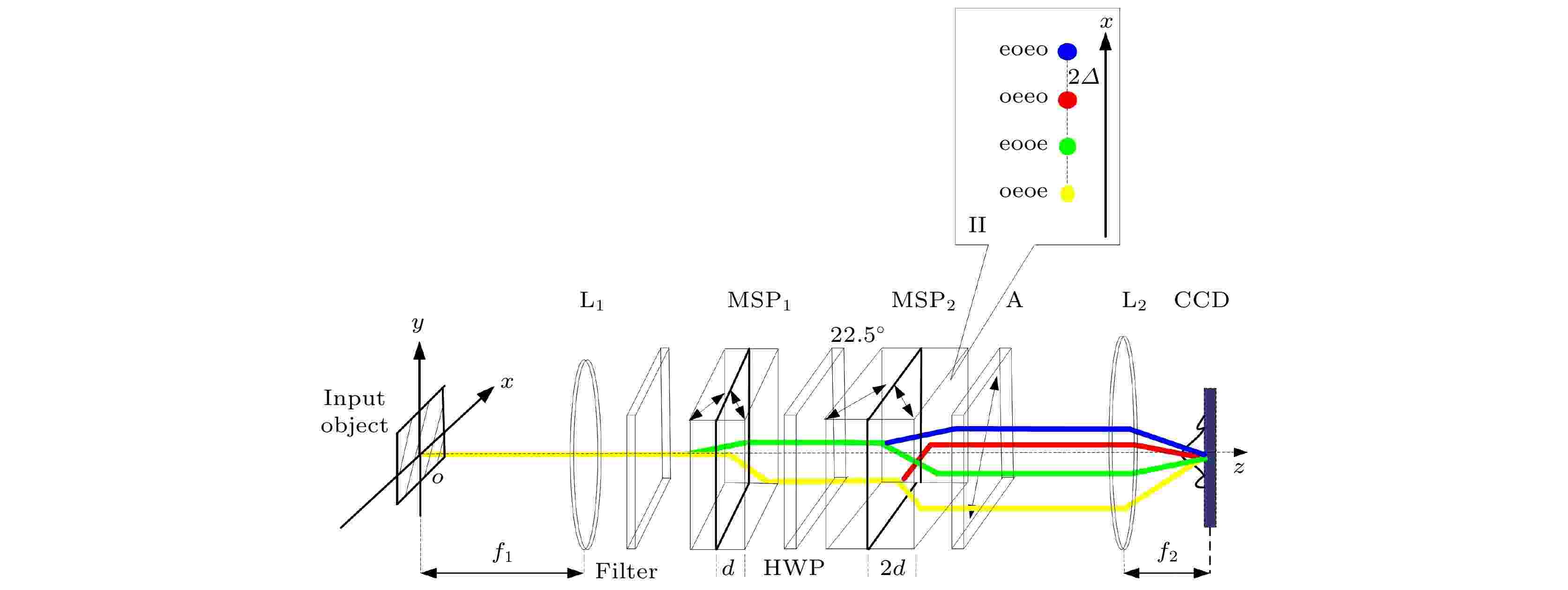
2022, 71 (15): 154205.
doi:10.7498/aps.71.20220229
Abstract +
The spatially modulated snapshot imaging polarimeter (SMSIP) can measure two-dimensional state of polarization through using the spatial carrier to encode the Stokes vectors in a single image. The traditional reference calibration is not suitable for dynamic environment (such as temperature change), and the dynamic calibration of linear shear spatial modulation snapshot imaging is proposed in this paper. In the dynamic calibration used are two modified Savart polariscopes with shear along the same direction as the core modulation device. In addition, the thickness ratio of the two modified Savart polariscopes is 1∶2. The spatial modulation phase factor generated by the core modulation device can be deduced from the interferogram and thickness ratio so as to demodulate all the polarization information of the target. The significant advantage of the dynamic calibration is that the target detection and the system calibration are carried out simultaneously. The reference target is not required in the process. In this work, the detailed theoretical analysis of the dynamic calibration is presented. In addition, a laboratory experiment and numerical simulation are conducted to demonstrate the validity of the proposed dynamic calibration. The present study provides a new idea for calibrating the spatially modulated snapshot imaging polarimeter, and effectively promotes its applications in engineering under dynamic environment.
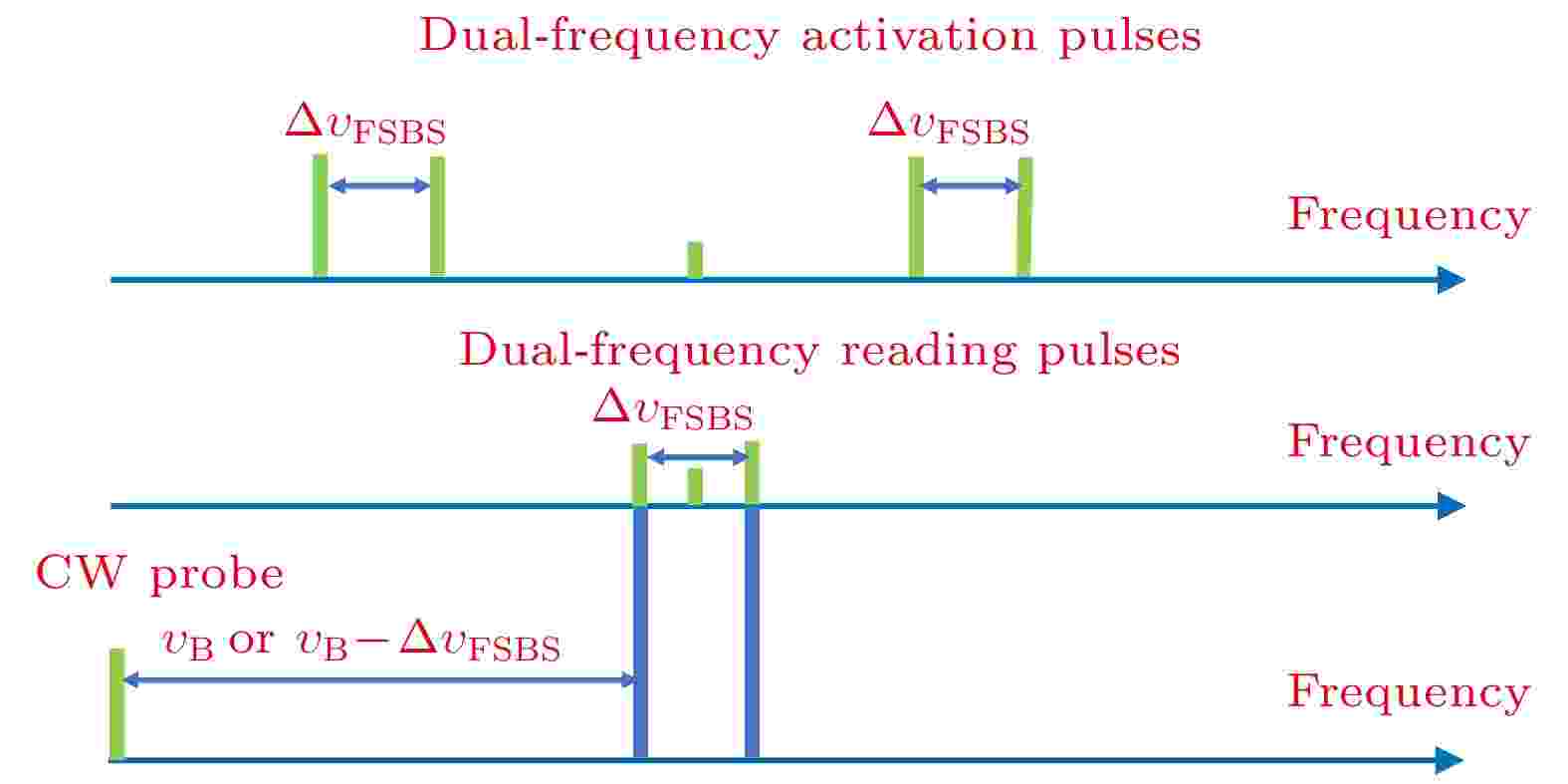
2022, 71 (15): 154206.
doi:10.7498/aps.71.20220313
Abstract +
The influences of nonlinear effects on sensing performance of forward stimulated Brillouin scattering (FSBS) are investigated using opto-mechanical time-domain analysis sensor, which is taken for example. The excitation of FSBS often requires high pulse power (at Watt level) because of the lower gain coefficient. Owing to the co-propagation of reading pulse and scattered light, high-power activation pulses will induce various nonlinear effects in an FSBS sensing system. Using the reported method based on activation-reading time-domain separation, the influences of nonlinear effects due to activation pulses can be effectively avoided. However, the nonlinear effects of reading pulses directly affect the sensing performance. Based on this consideration, we study the influences of nonlinear effects on FSBS sensing and their physical mechanisms under different values of peak power of reading pulses; the variation process of the 1st- and 2nd-order FSBS spectrums along ~4.7 km standard single-mode fiber are revealed in detail. Finally, the optimal region is found, in which a perfect FSBS local spectrum is obtained, and the sensing distance can be extended.
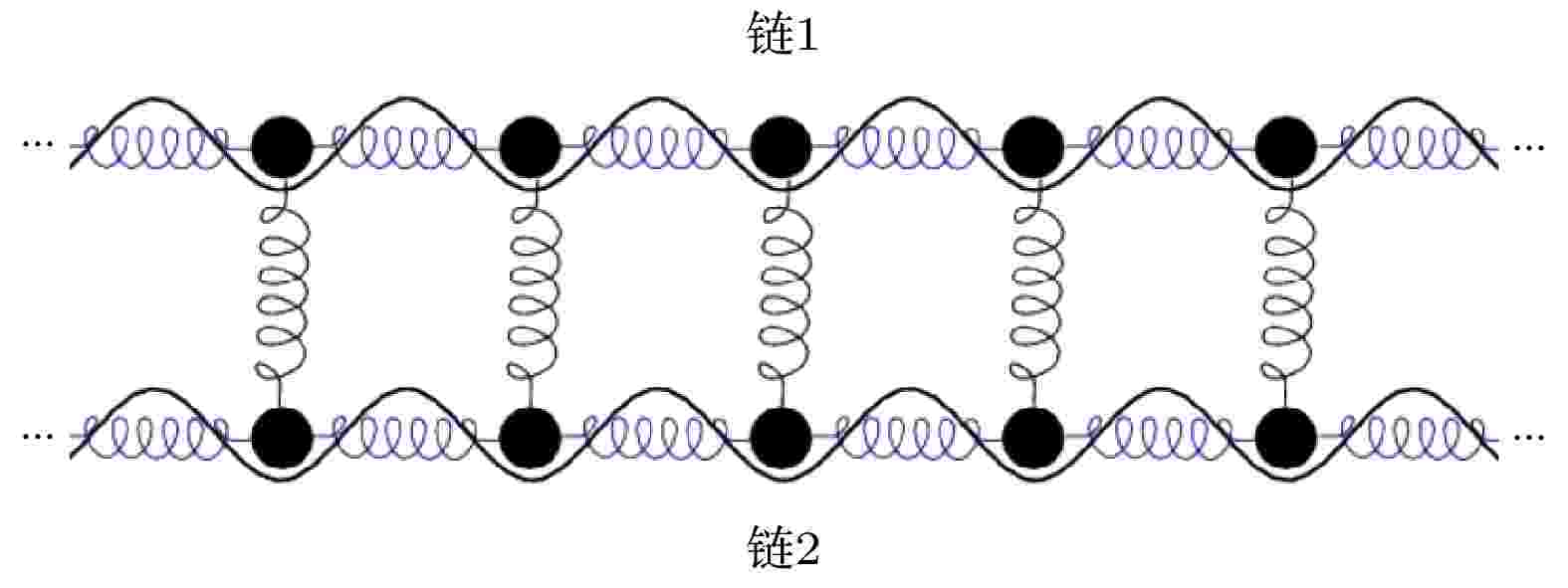
2022, 71 (15): 154401.
doi:10.7498/aps.71.20212362
Abstract +
We obtain the lattice wave solution and the dispersion relation of the lattice vibration equation of the two identical coupled Frenkel-Kontorova (FK) chains, and we study the lattice vibration characteristics of the coupled FK chains. The results show that the dispersion relation of coupled FK chain contains an acoustic branch and an optical branch. The spectral range and frequency band gap are related to the coefficient of restoring force of each chain and the inter-chain coupling strength, and it is also related to the depth of the on-site potential for the low temperature case and finite temperature case. Moreover, it is found that there is no frequency band gap for weak inter-chain coupling. The frequency gap appears when the inter-chain coupling strength exceeds a critical value, and the frequency band gap will become bigger with the inter-chain interaction increasing. This is because the optical branch moves towards high frequency region with the inter-chain coupling increasing. We also find that the critical inter-chain coupling strength of frequency band gap is always twice the restoring force coefficient of FK chain, and it does not depend on temperature. In addition, we study the effect of temperature on the dispersion relationship of coupled FK chain with a fixed inter-chain coupling strength. These results provide a theoretical basis for analyzing the effects of inter-chain coupling and temperature on the vibrational characteristics and physical properties of lattice, and thus providing an important guide for the energy transport, thermal management and other practical applications.
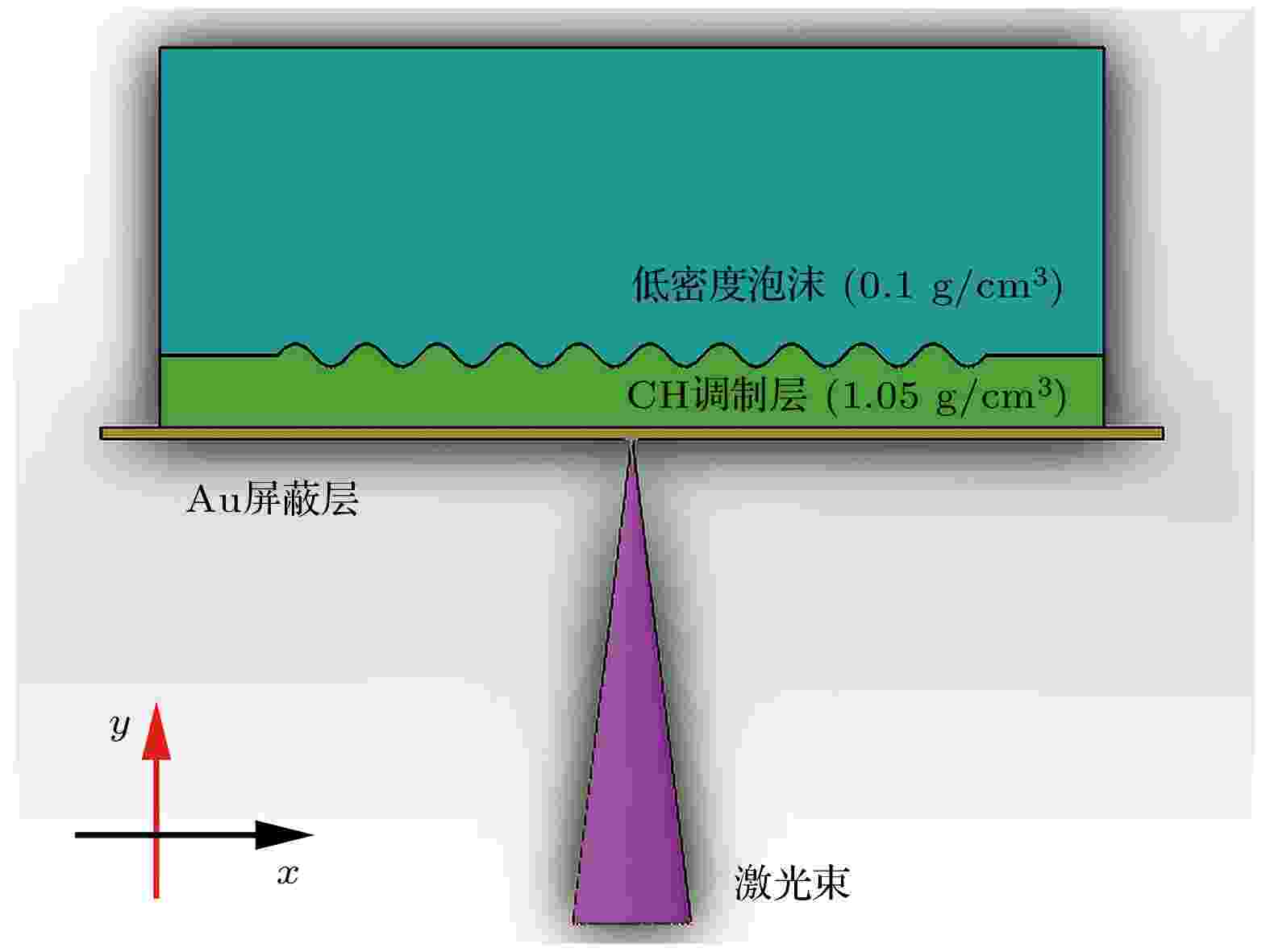
2022, 71 (15): 154701.
doi:10.7498/aps.71.20220362
Abstract +
Rayleigh-Taylor instability (RTI) is a fundamental physical phenomenon in fluids and plasmas, and plays a significant role in astrophysics, space physics, and engineering. Especially in inertial confinement fusion (ICF) research, numerous experimental and simulation results have identified RTI as one of the most significant barriers to achieving fusion. Understanding the origin and development of RTI will be conducive to formulating mitigation measures to curb the growth of instability, thereby improving the odds of ICF success. Although there have existed many theoretical and experimental studies of RTI under high energy density, there are few experiments to systematically explore the influence of magnetic fields on the evolution of magnetized RTI. Here, a new experimental scheme is proposed based on the Shenguang-II laser facility on which the nanosecond laser beams are used to drive modulation targets of polystyrene (CH) and low-density foam layers. A shock wave is generated after the laser’s CH modulation layer has been ablated, and propagates through CH to low-density foam. Moreover, Richtmyer-Meshkov instability is triggered off when the shock wave accelerates the target. When the laser pulse ends, the shock wave evolves into a blast wave, causing the system to decelerate, resulting in RTI in the reference system of the interface. In this paper the open-source radiation MHD simulation code (FLASH) is used to simulate the RTI generated by a laser-driven modulation target. The evolution of RTI under no magnetic field, under Biermann self-generated magnetic field, and under different applied magnetic fields are systematically investigated and compared with each other. The simulation results show that the Biermann self-generated magnetic field and the applied magnetic field parallel to flow direction do not change the interface dynamics in the evolution process of RTI. Nevertheless, the applied magnetic field perpendicular to flow direction can stabilize RTI and the Kelvin-Helmholtz vortex at the tail of the RTI spike. Magnetic pressure plays a decisive role. The present results provide a reference for the follow-up study of target physics related to ICF and deepen the understanding of the fluid mixing process.
PHYSICS OF GASES, PLASMAS, AND ELECTRIC DISCHARGES
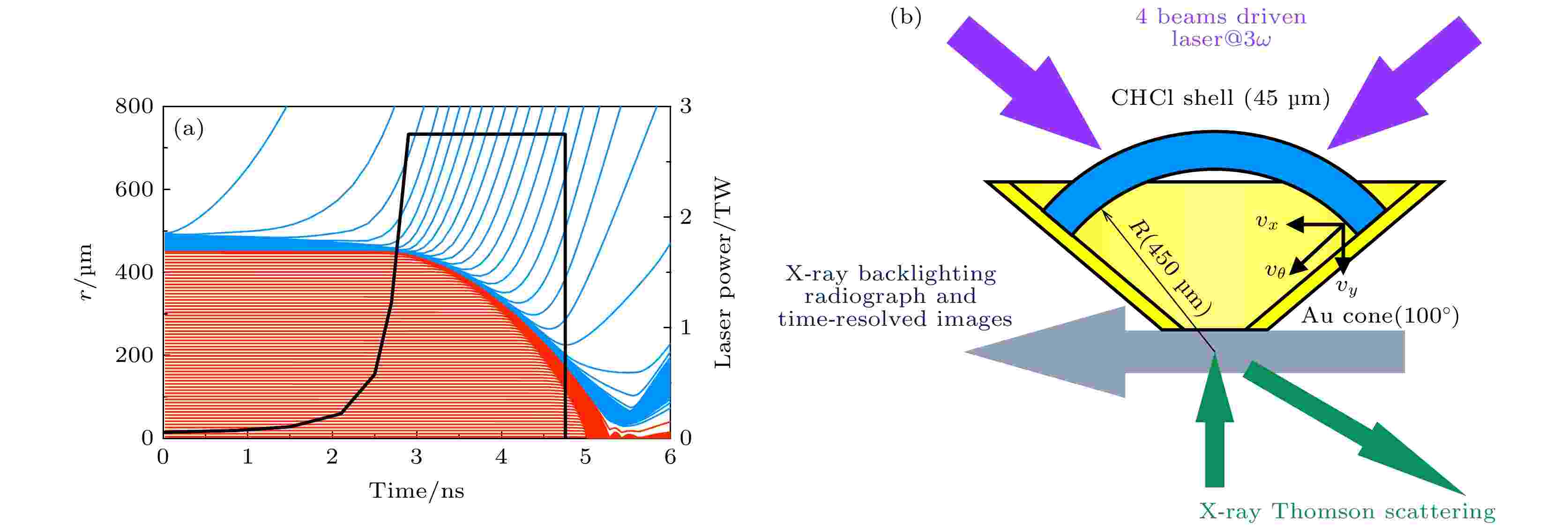
COVER ARTICLE
2022, 71 (15): 155201.
doi:10.7498/aps.71.20220361
Abstract +
A collision of supersonic jets in the double-cone ignition scheme is realized experimentally. With a very high deceleration, the supersonic jets merge into a high density plasma core, which will be further fast heated to ignition condition. Both the density and temperature of the plasma core are increased due to nearly 100% of kinetic energy of the jets converted into the internal energy. Some diagnostic tools are used to characterize the plasma, including X-ray Thomson scattering, hard X-ray monochromatic backlighting, X-ray streak imaging and framing imaging. The density of the supersonic jet arrive at about 5.5–8 g/cm3. During colliding, a stagnation phase lasts about 200 ps, and the maximum density of the plasma core is increased to (46 ± 24) g/cm3. By analyzing the velocity and temperature before and after colliding, it is found that 90% of the kinetic energy is converted into thermal energy.
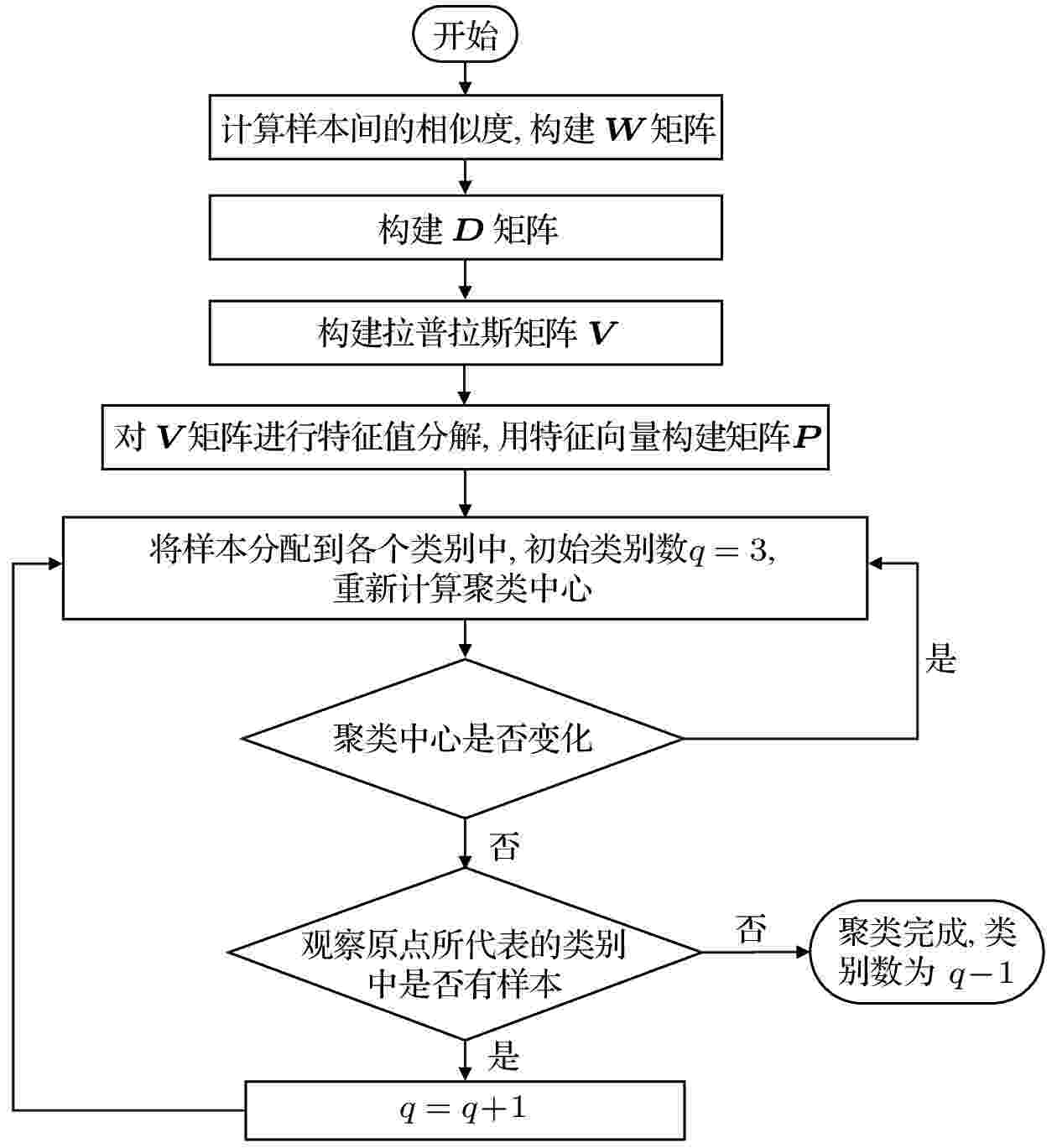
2022, 71 (15): 155202.
doi:10.7498/aps.71.20220367
Abstract +
The number of data accumulated by controllable nuclear fusion devices is too large, and a large number of data have not been fully exploited. In such big data processing machine learning can play an important role. Therefore, in this work the spectral clustering method is used to realize the automatic processing of data, which can easily and quickly find the pattern information contained in the data. The discovery of these patterns is of great significance in improving plasma confinement and understanding plasma physics. In addition, in this work the spectral clustering method is applied to the electron cyclotron emission imaging (ECEI), one-dimensional diagnostic system electron cyclotron emissiometer, magnetic probe, soft X-ray, fast radiation (fast bolometer) and other different diagnostic systems on the EAST tokamak device. The sawtooth pattern is identified, the migration of the spectral clustering method is verified, and the problems of poor data processing migration in supervised learning and the need to rely on a large number of labeled data are solved. Finally, in this work, the ECEI and magnetic probe data are used to discover a possible new mode in the time domain and frequency domain respectively, which provides a new idea for exploring new modes.
CONDENSED MATTER: STRUCTURAL, MECHANICAL, AND THERMAL PROPERTIES

EDITOR'S SUGGESTION
2022, 71 (15): 156101.
doi:10.7498/aps.71.20220419
Abstract +
Paris-Edinbrugh (PE) press has been widely used in high pressurein-situneutron diffraction experiments due to its advantages of large sample size, portability and simple structure. However, with the characteristics of uniaxial load of PE press, the weak lateral support makes the gasket and cell assembly continue flowing outward. So, the development of cell assembly of PE press that can simultaneously work under high pressure and high temperature (highP-T) is a great challenge. In this work, we design three-segment highP-Tassembly of PE press for neutron diffraction, which can significantly improve the heating efficiency, thermal insulation, and stability of assembly. By using the fanned Cu foil leads of thermocouple, we realize thein-situmeasurement of assembly temperature under a high pressure up to 5 GPa. The designed HPT-3 and HPT-3.5 assemblies can arrive at 2034 K and 1515 K respectively, which are measured by thermocouple. The highP-Texperiments of HPT-3 assembly are carried out on a high-pressure neutron diffraction spectrometer (Fenghuang) of China Mianyang Research Reactor (CMRR). The results show that the designed assembly can simultaneously achieve highP-Tof 8.5 GPa and 1508 K with collecting the high-quality neutron diffraction data of MgO cylindrical sample.
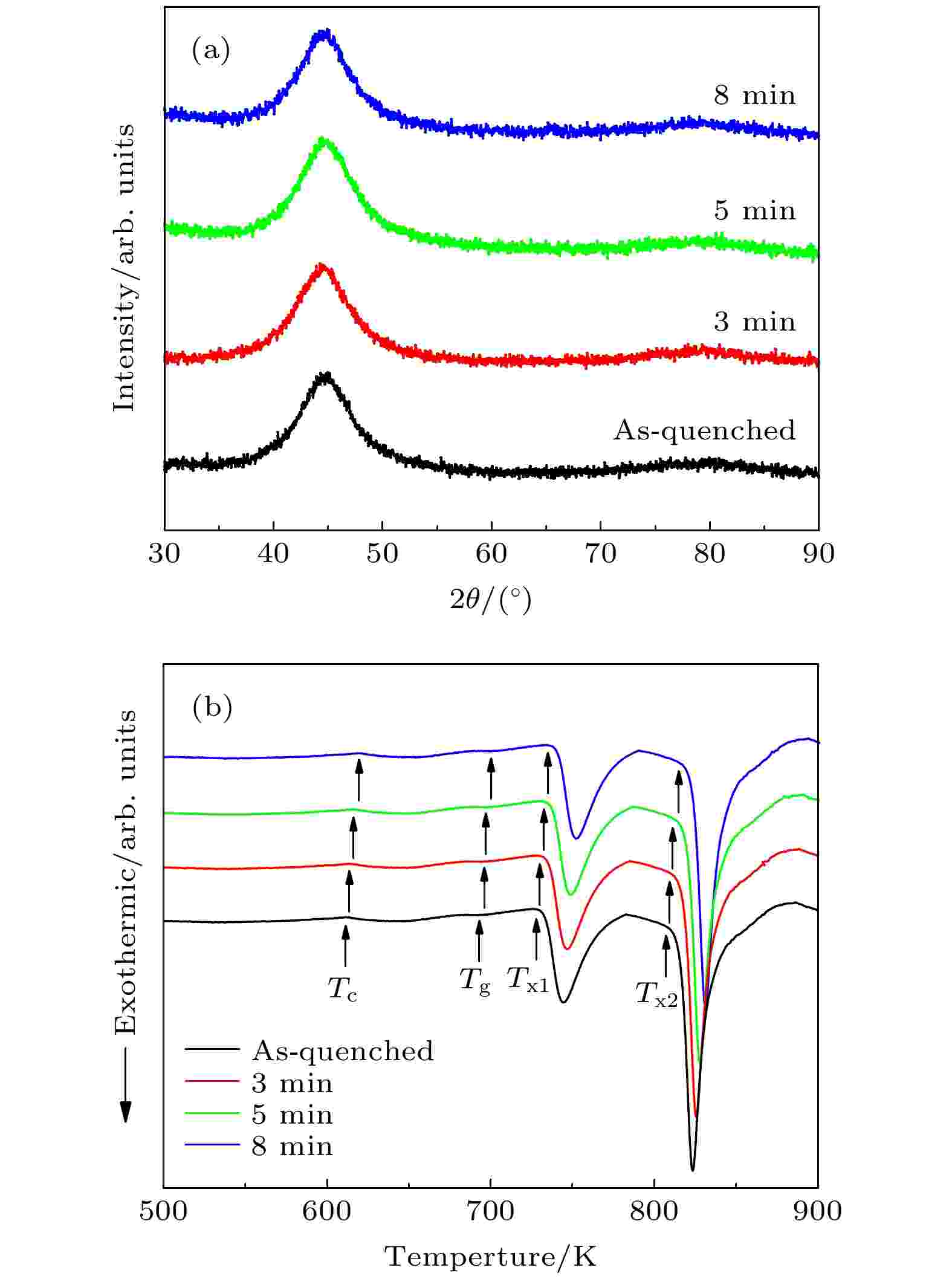
2022, 71 (15): 156102.
doi:10.7498/aps.71.20220446
Abstract +
The evolution of nanoscale structural heterogeneity and its effect on magnetic properties of Fe80Si9B10Cu1amorphous alloy during structural relaxation after being annealed for different times are investigated in this work. The nanoscale structural heterogeneity is found to degenerate gradually with relaxation by using the small-angle X-ray scattering and atomic force microscope. Combined with Mössbauer spectroscopy analysis results, the enhanced comprehensive soft magnetic properties of the relaxed alloys can be attributed to the degeneration of nanoscale structural heterogeneity. From the flow unit model, the volume fraction of flow units decreases with relaxation proceeding, and some of the flow units annihilate and transform into the ideal elastic matrix. On the one hand, the relaxed sample with greater packing density has stronger magnetic exchange interaction and higher saturation magnetic flux intensity. On the other hand, the number density of quasi-dislocation dipoles decreases with the annihilation of flow units in the relaxation process, leading the pinning effect of the domain wall to be weakened. Consequently, the magnetic anisotropy decreases after relaxation, which results in the reduction of coercivity. In this work, the structural mechanism of the evolution of magnetic properties in the relaxation process of Fe80Si9B10Cu1amorphous alloy is investigated from the perspective of structural heterogeneity, which is helpful in establishing the correlation between the structure and magnetic properties of Fe-based amorphous alloys.
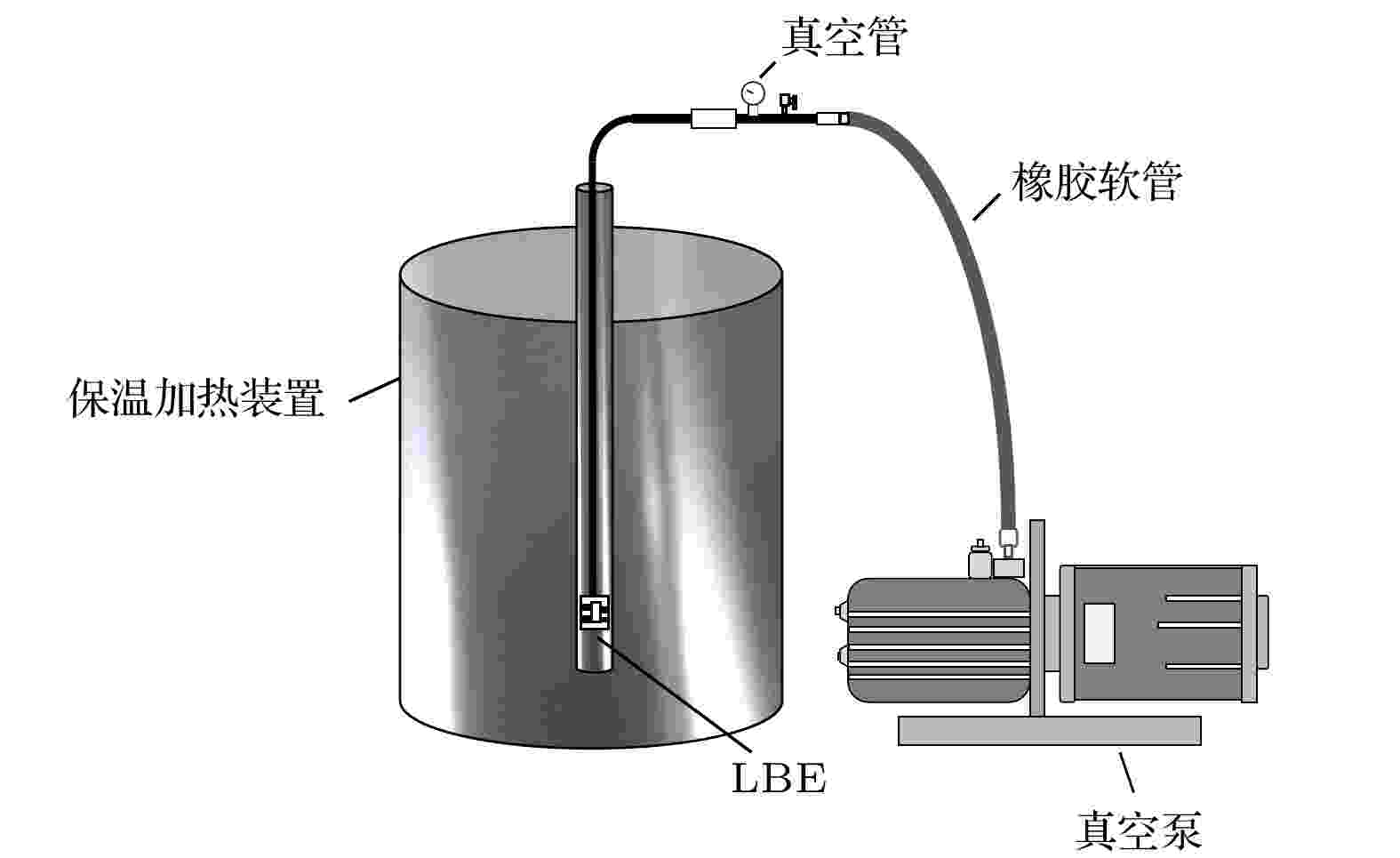
2022, 71 (15): 156103.
doi:10.7498/aps.71.20220356
Abstract +
Ferritic/martensitic steels, such as T91 steel and SIMP steel, are chosen as the main candidates of structural materials for the Generation IV lead-cooled fast reactors and accelerator driven system. However, the compatibility between container steel and liquid Pb-Bi eutectic (LBE) at high temperature limits their applications. The corrosion of ferritic/martensitic steels is serious in LBE at 600 ℃. In order to avoid corroding the ferritic/martensitic steels in LBE, it is proposed to coat AlOx(x< 1.5) on the steel surface. The AlOxcoating is conducted on T91 steel and SIMP steel by magnetron sputtering. In this exploratory work, the corrosion results of AlOxcoating steel are compared with the corrosion results of the uncoated steel in LBE with a saturated oxygen concentration at 600 ℃ for 300 h and 700 h. The results show that the AlOxcoating can effectively prevent the iron chromium and oxygen from diffusing, so the oxide scale of the coated steel is thinner than that of the uncoated steel. However, the coating cracks after 700 h corrosion in LBE. Meanwhile, T91 steel and SIMP steel also suffer serious oxidative corrosion, indicating that the coating can protect the substrate from being corroded by 600 ℃ static LBE in a short time. However, the coating cannot keep stable for a long time in LBE at 600 ℃. This may be due to the weak film base bonding force of AlOxcoating prepared under the experimental conditions, or a large number of metal aluminum and structural defects existing in AlOxcoating. It is needed to further study the stability of AlOxcoating in LBE at elevated temperature.
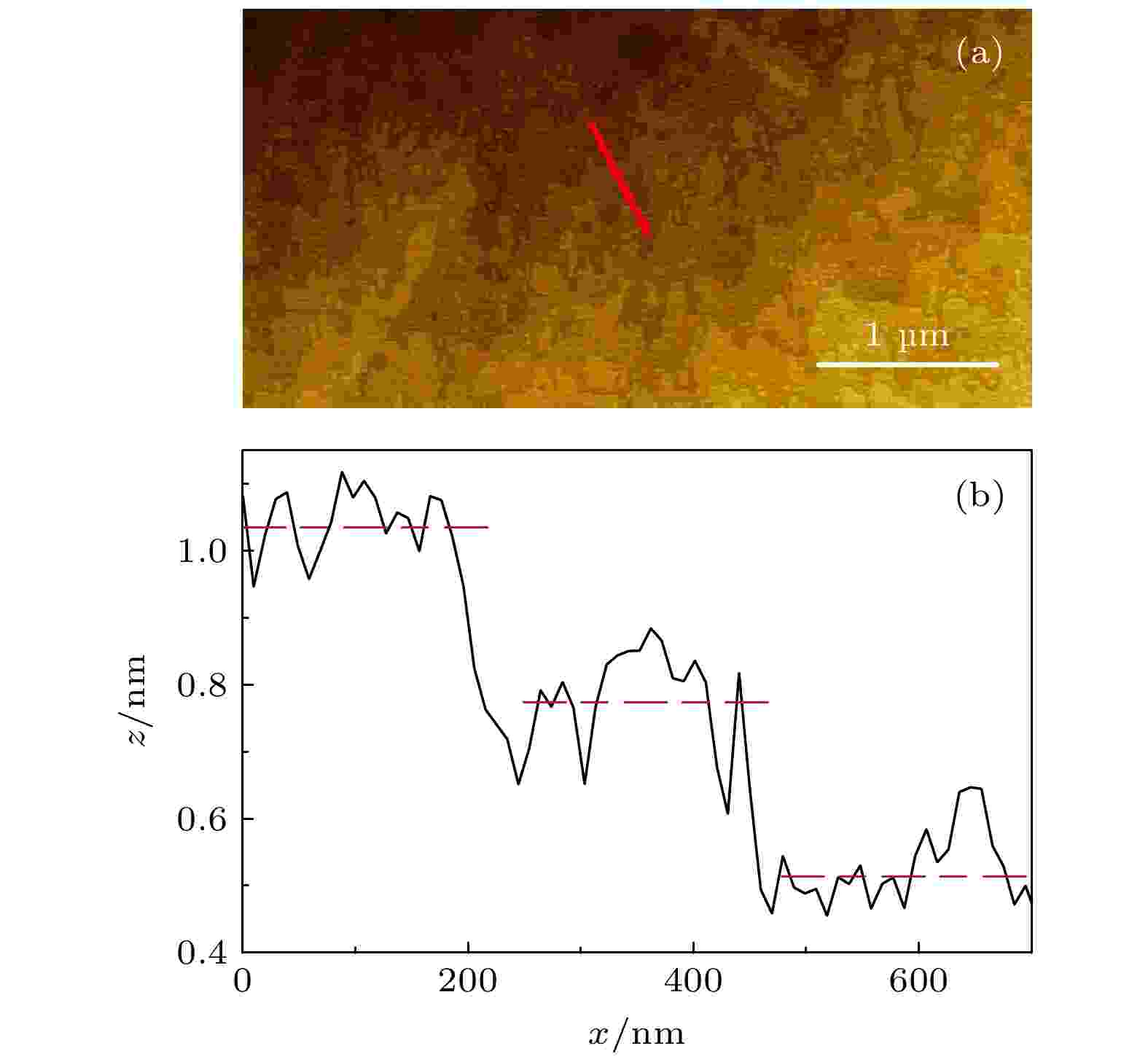
2022, 71 (15): 156801.
doi:10.7498/aps.71.20220365
Abstract +
Perovskite superlattices have received enormous attention in recent years, for they possess several new phases of quantum matter. In particular, an unexpected exchange bias effect in (111)-oriented superlattices composed of ferromagnetic LaMnO3and paramagnetic LaNiO3is observed, which has aroused broad interest. In this work, three kinds of LaMnO3/LaNiO3superlattices with (001), (110), and (111) out-of-plane orientation are fabricated by pulsed laser deposition, and also studied systemically. It is found that the superlattices are epitaxially grown on the SrTiO3substrates without strain relaxation. The superlattices have a monolayer terraced structure with a surface roughness below 0.1 nm. Electrical transport measurements reveal a Mott conducting behavior with strong localization of electrons in the superlattices. All the superlattices with different orientations exhibit exchange bias phenomenon. The field cooling and zero field cooling curves indicate that there are two different magnetic components in the superlattice in a low temperature range. Further analysis of the values of exchange field reveals that the exchange bias field is related to the orientation and polarity of the superlattices. Different superlattices form different charged planes stacked along out-of-plane orientation, leading to a polarity match/mismatch at the interface between the superlattices and substrates. The surface reconstructions that act as compensating for the polar mismatch influence the exchange bias field of the superlattices. It is observed that the intensities of the exchange field of the polar-matched superlattices are higher than those of the polar-mismatched superlattices at different temperatures. These results are helpful in further understanding the magnetoelectric transport properties in the perovskite superlattices.
CONDENSED MATTER: ELECTRONIC STRUCTURE, ELECTRICAL, MAGNETIC, AND OPTICAL PROPERTIES

EDITOR'S SUGGESTION
2022, 71 (15): 157301.
doi:10.7498/aps.71.20220358
Abstract +
In-plane heat dissipation technology based on flexible thermoelectric film cooling is expected to provide a solution to efficient in-plane heat dissipation of electronic devices. However, the low electrical transport performance of flexible thermoelectric films and the difficulty in designing the structure of in-plane heat dissipation device seriously restrict the applications of this technology in heat dissipation of electronic devices. In this work, an epoxy/Bi0.5Sb1.5Te3flexible thermoelectric film is incorporated with graphene which can simultaneously regulate the electrical and thermal transport behaviors. It is found that the incorporating of graphene not only contributes to the preferential orientation of Bi0.5Sb1.5Te3grains along (000l), but also provides a fast carrier transport channel. The carrier concentration and mobility of graphene/Bi0.5Sb1.5Te3flexible thermoelectric film are simultaneously increased. Comparing with the epoxy/Bi0.5Sb1.5Te3flexible thermoelectric film, the highest power factor of the flexible thermoelectric film with 1.0% graphene at room temperature reaches 1.56 mW/(K2·m), increased by 71%, while the cooling temperature difference is doubled. Using this high-performance graphene/Bi0.5Sb1.5Te3flexible thermoelectric film cooling, a cascade structure high-efficiency in-plane heat dissipation device is designed and fabricated. The device can dissipate heat from the heat source area to the heat dissipation area step by step and reduce the temperature of the heat source area by 1.4–1.9 ℃, showing an efficient and stable in-plane heat dissipation capability.
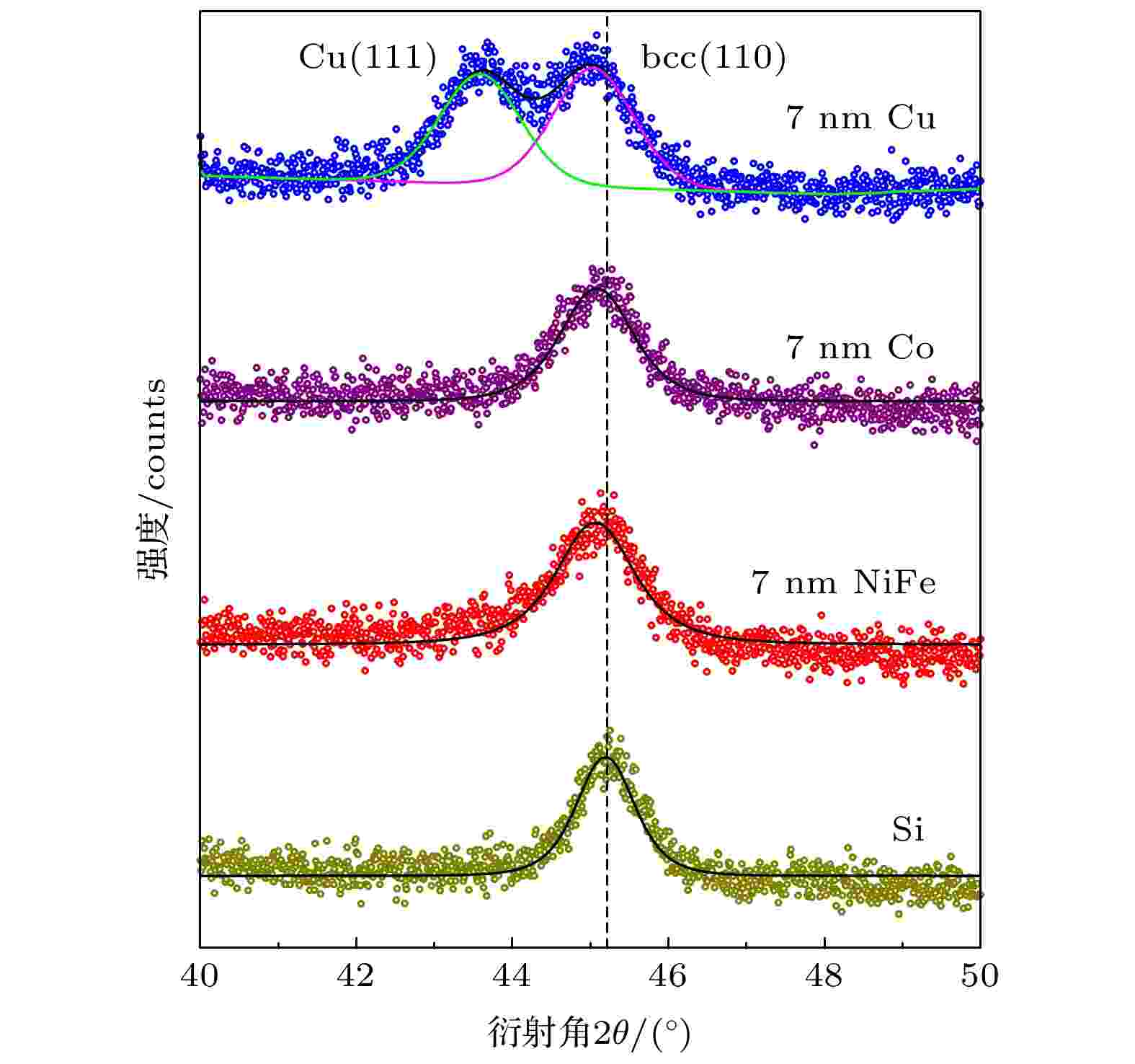
2022, 71 (15): 157501.
doi:10.7498/aps.71.20220476
Abstract +
Fe100-xCox(x= 30–40) alloys have the highest saturation magnetizations, 4πMs≥ 24 kG (1 G = 10–4T). Therefore, FeCo thin flms have been widely used in microwave magnetic devices. However, the as-deposited FeCo film has a large coercivity, which is attributed to the large saturation magnetostriction and high magneto-crystalline anisotropy.On the basis of maintaining high saturation magnetization, adding an appropriate underlayer is a simple and effective method to reduce the coercivity of the film and facilitate the magnetic field-induced in-plane uniaxial magnetic anisotropy. Since these kinds of films are used in a high-frequency environment, the eddy current loss in GHz band must be considered. For a certain film material, the thinner the film, the lower the eddy current loss is. However, at present, the thickness of ferromagnetic layer is generally tens of nanometers or even hundreds of nanometers, which will not help to suppress the eddy current loss at high frequency. In the present study, to obtain FeCo films with good soft magnetic properties and excellent high-frequency characteristics, Fe65Co35alloy films with a thickness of 13 nm and different underlayers (Cu, Co and Ni80Fe20) are prepared by magnetron sputtering. The effects of different underlayer materials and different NiFe underlayer thickness values on the structures and magnetic properties of FeCo films are studied. The results show that the introduction of underlayers can increase the in-plane uniaxial magnetic anisotropies of films, and the soft magnetic properties of films are significantly improved. The reason why the good soft magnetic properties can be achieved is attributed to the grain refinement, the dipolar interaction between layers, and the reduction of surface roughness. For different underlayer materials with the same thickness, NiFe underlayer can obviously improve the soft magnetic properties of FeCo films: the covercivity of easy axis is 23 Oe. By changing the thickness of NiFe underlayer, the dynamic magnetic properties of films can be adjusted. The resonance frequency changes from 3.13 GHz for NiFe(1 nm)/FeCo(13 nm) film to 2.78 GHz for NiFe(9.3 nm)/ FeCo(13 nm) film. For all NiFe/FeCo bilayer films, the real part of the permeabilityμ′at low frequency has a large value of 350–450, and the damping coefficientαshows a small value of 0.01–0.02. In addition, the smaller film thickness can reduce eddy current loss, which contributes to its application in high-frequency microwave magnetic devices.
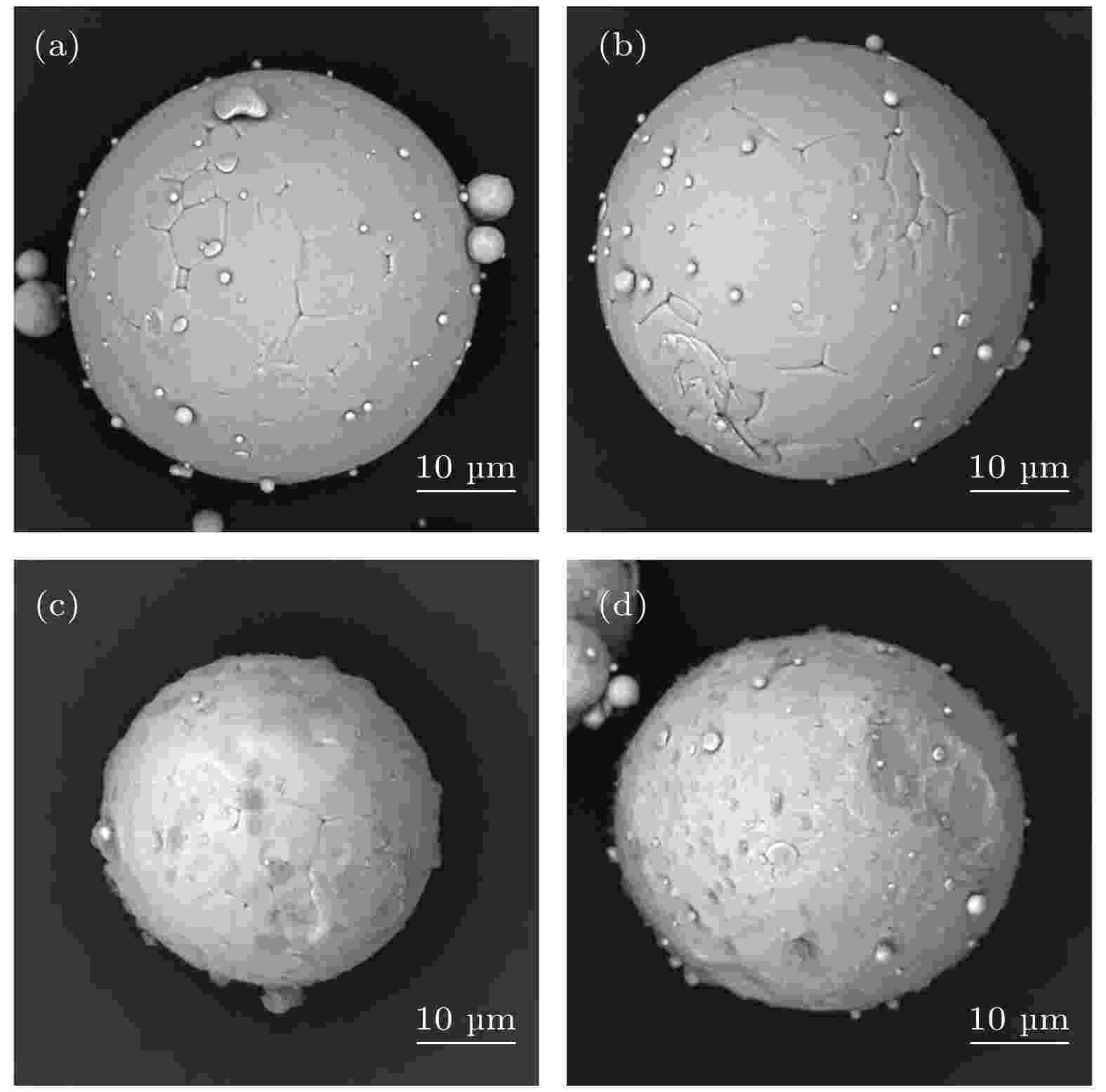
2022, 71 (15): 157502.
doi:10.7498/aps.71.20212317
Abstract +
Nowadays, metal soft magnetic materials are mainly used in electronic components such as high-frequency inductors. Since all the elements in the soft magnetic alloys are transition metals, dense oxide layer is easily formed on their surfaces, which can affect the regulation of soft magnetic properties. In order to solve the problems, in this work, an innovative high-temperature pretreatment process in H2/Ar mixture is adopted to pretreat FeNiMo raw powders. We confirm that the high temperature treatment in reducing atmosphere can effectively remove metal oxides from the FeNiMo material surface and increase the content of elemental states, thereby further significantly improving the effective permeability of FeNiMo raw powders. The pretreated FeNiMo powder is evenly coated with SiO2layers, forming the FeNiMo/SiO2soft magnetic composites. Compared with the untreated FeNiMo powder coated with SiO2, the FeNiMo/SiO2pretreated with H2/Ar mixture gas at high temperatures has high effective permeability and low loss. Our FeNiMo/SiO2cores prepared by the synergistic effect of high-temperature pretreatment process in H2/Ar mixture and insulation coating process have more excellent soft magnetic properties than other iron-based soft magnetic composites. Therefore, the insulation coating after being pretreated at high temperature in reducing atmosphere can greatly improve the permeability and reduce the core loss of soft magnetic composites. This will provide a new strategy for enhancing the soft magnetic properties of the composite cores.
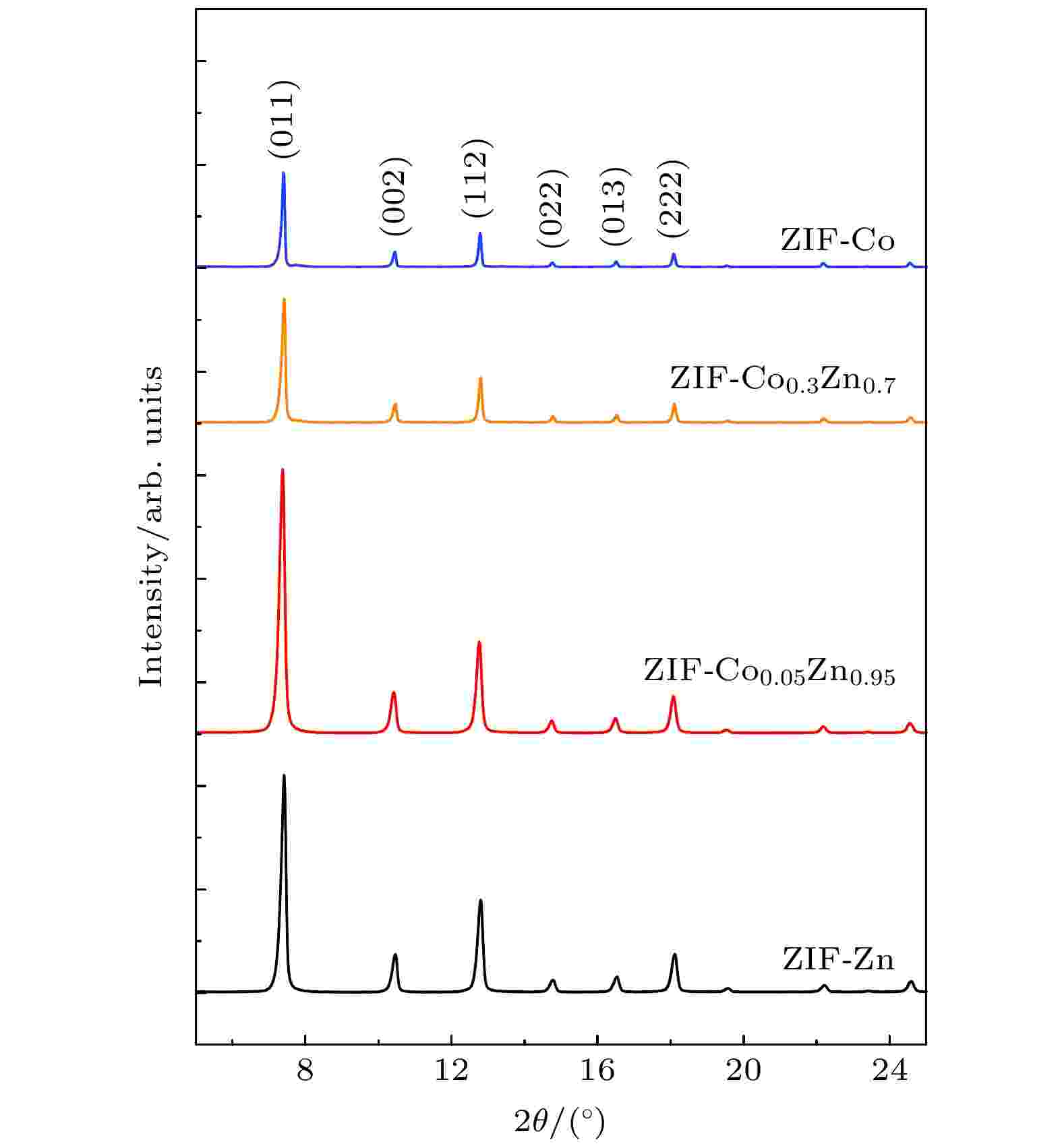
EDITOR'S SUGGESTION
2022, 71 (15): 157801.
doi:10.7498/aps.71.20220305
Abstract +
ZIFs crystal is composed of imidazolidyl bridging single metal ions, and its structure can be adjusted by flexibly selecting functional groups of imidazolidyl ligands, thereby possessing more new properties and functions. While, the pore structure and chemical environment of ZIFs crystals are closely related to their properties. In this work, ZIF nanocrystals are prepared by static reaction. The X-ray diffraction results confirm that the prepared crystals are typical of ZIF-8 crystals, and the regular rhomboidal structure can be observed by scanning electron microscopy. The N2adsorption-desorption test indicates that the ZIF crystal exhibits the larger specific surface area (2966.26 m2/g) and pore volume (3.01 cm3/g) . With the increase of Co content, specific surface area and pore volume of ZIFs crystal decrease, while the pore size remains nearly unchanged (around 12 Å). However, the pore size distribution calculated by N2adsorption/desorption isothermal curve does not show the ultra-micropore information of the six-membered ring composed of imidazole ligands (3.4 Å). The microstructure and surface properties of the crystal are investigated by positron annihilation lifetime and Doppler broadening. The positron lifetime spectrum has four components. The longer lifetimes
$ {\tau }_{3} $
and
$ {\tau }_{4} $
are the annihilation lifetimes of o-Ps in the microporous region and the regular angular gap of the crystal, respectively. With the increase of Co content, the lifetime
$ {\tau }_{3} $
hardly changes, while the longer lifetime
$ {\tau }_{4} $
decreases from 30.89 ns to 12.57 ns, and the corresponding intensities
$ {I}_{3} $
and
$ {I}_{4} $
decrease sharply from 12.93% and 8.15% to 3.68% and 0.54%, respectively. With the increase of Co content, theSparameter obtained by doppler broadening shows a continuous upward trend, and the p-Ps intensity also increases gradually, which is mainly due to the self-rotation effect of the electron element. Therefore, the decrease of
$ {\tau }_{4} $
in ZIFs nanocrystal is probably due to the self-rotation effect of positronium and Co ion on the crystal surface.
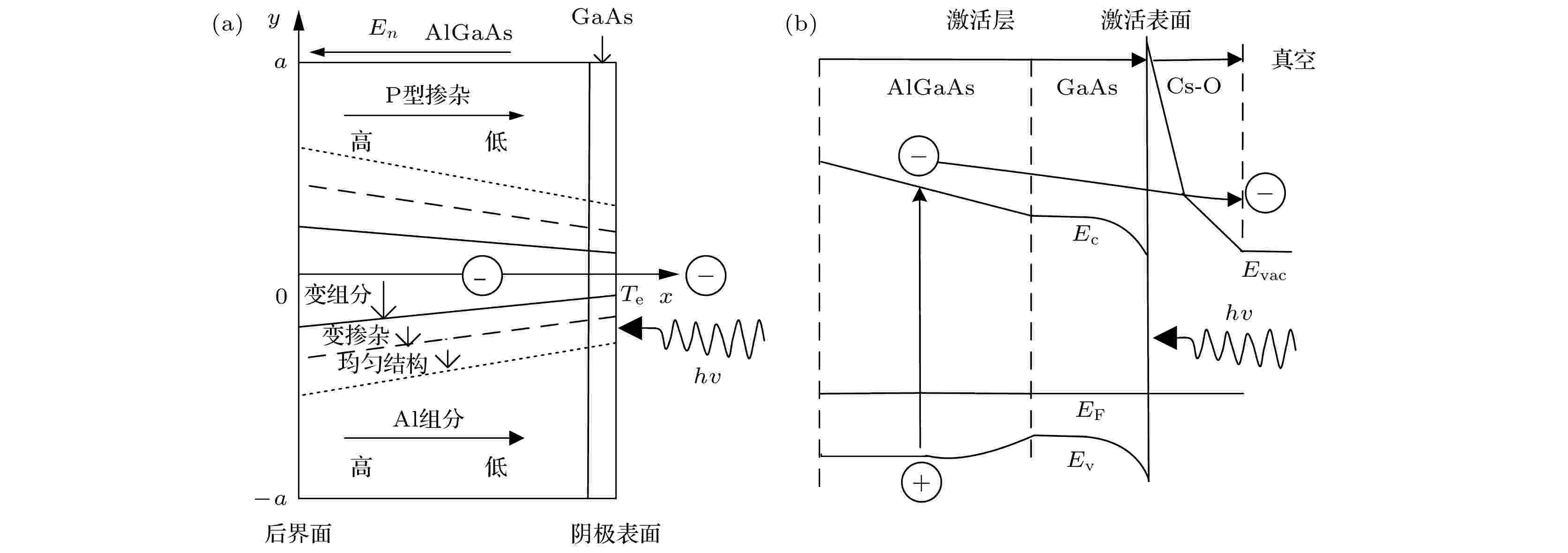
2022, 71 (15): 157901.
doi:10.7498/aps.71.20220244
Abstract +
According to the established resolution model and modulation transfer function (MTF) of varying doping and varing composition reflection-mode (r-mode) AlxGa1–xAs/GaAs photocathode, the resolutions of four types of r-mode photocathodes, i.e. linearly varying doping and linearly varying Al composition, uniform doping and linearly varying Al composition, linearly varying doping and uniform Al composition, uniform doping and uniform Al composition structures, are simulated, and the effects of Al composition, the types of doping, AlxGa1–xAs layer thickness, GaAs layer thickness, and incident light wavelength on the resolution of cathodes are analyzed. The simulation results indicate that the varying doping and varying band-gap structures can also upgrade the resolution for r-mode AlxGa1–xAs/GaAs photocathodes, and the effect of linearly varying doping and linearly varying composition structure are more pronounced. The simulation results also show that the MTFs of the cathodes with the Al composition varying from 0.45 to 0 linearly declining are highest. The MTFs of the cathodes with the linearly varying doping from 1019−1018cm–3are higher than that with uniform 1019cm–3doping. With the increase of AlxGa1–xAs thickness, GaAs thickness and incident light wavelength, the MTFs of four types photocathode have different regularities.
INTERDISCIPLINARY PHYSICS AND RELATED AREAS OF SCIENCE AND TECHNOLOGY
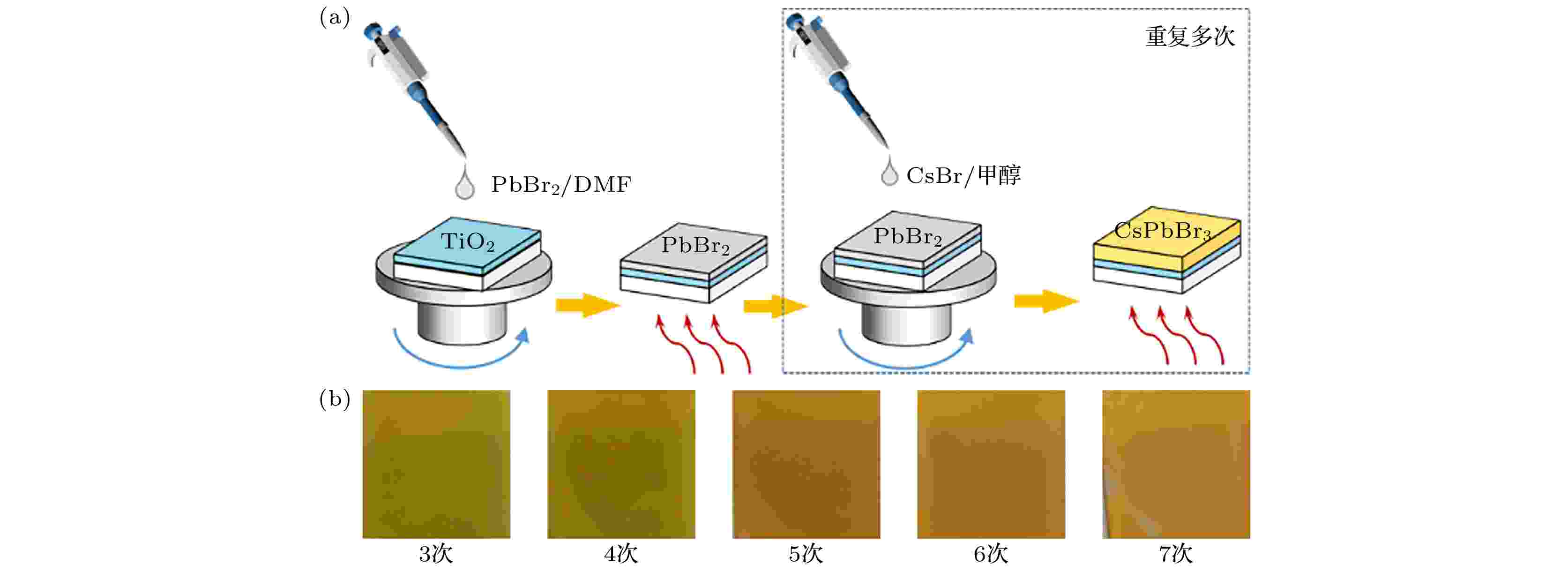
2022, 71 (15): 158101.
doi:10.7498/aps.71.20220171
Abstract +
The quality of perovskite films plays a crucial role in solar cell, which can affect the stability and power conversion efficiency (PCE). As one of inorganic perovskites with excellent stability, CsPbBr3perovskite is usually prepared by multi-step method due to the large difference in solubility between its precursor salts (PbBr2and CsBr). The main reason is that the formation mechanism of CsPbBr3film is not thoroughly studied. The incomplete reaction of PbBr2and emergence of Cs4PbBr6when the CsBr is excessive become problems that need to be solved urgently. In this paper, the phase transition of films during spin coating is observed in detail. In the process of film formation, the CsBr diffuses into the predeposited PbBr2film to complete the reaction. The short reaction time results in insufficient reactions inside the film but overreaction on the surface of film. The CsPb2Br5and Cs4PbBr6appear with CsPbBr3perovskite, and the film formed by repetitively annealing blocks the diffusion of CsBr. Methanol has an etching effect on the perovskite film which can eliminate the blocking effect. By extending the reaction time of CsBr solution on the film surface, the PbBr2in the bottom layer is fully reacted, and after being annealed, the perovskite film will recrystallize to form a compact film. With the reaction time controlled appropriately, the CsPb2Br5in the film can be effectively reduced and Cs4PbBr6will not appear. The film grain size increases, grain boundary decreases, and the recombination is effectively inhibited, which ensures the improvement of the photoelectric performance of the solar cell. Under the condition of spin-coating four times and reaction time of 30 s, the solar cell has 6.30% PCE,Voc= 1.28 V,Jsc= 8.40 mA/cm2,FF= 0.59 . Comparing with the solar cells with no extended reaction time, the PCE improves more than 18%. This work will provide an important insight into the growth mechanism of perovskite film toward high crystallinity and less defects.

2022, 71 (15): 158501.
doi:10.7498/aps.71.20220373
Abstract +
Superconducting nanowire single photon detector (SNSPD) has been widely used in many fields such as quantum computing, quantum key distribution and laser radar, due to its high detection efficiency, low dark count rate, high counting rate, and low timing jitter. In most cases, the SNSPD works under the DC-bias mode that can detect single photons arrived at any time. In some cases such as satellite laser ranging and single-photon laser radar where the light pulses arrive regularly, the AC-bias mode enables the SNSPD to work with higher counting rates and lower background dark counts, which however requires complicated readout due to the low signal-to-noise ratio of the photon response. In this work, we report on an AC-biased SNSPD system with a self-differential readout circuit. The system includes a 2-pixel SNSPD consisting of two parallel nanowires, which are biased with 100 MHz sinusoidal current. The output signals of these two nanowires are amplified and combined for the differential readout of the photon response. The resulting response pulse possesses a signal-to-noise ratio ten times higher than that extracted before self-differential readout. In addition, the dark counts are reduced by a factor of 4, and the count rates are increased by a factor of 1.5, in comparison with those under the DC-bias mode. This work provides a specific method to read out the AC-biased SNSPD.
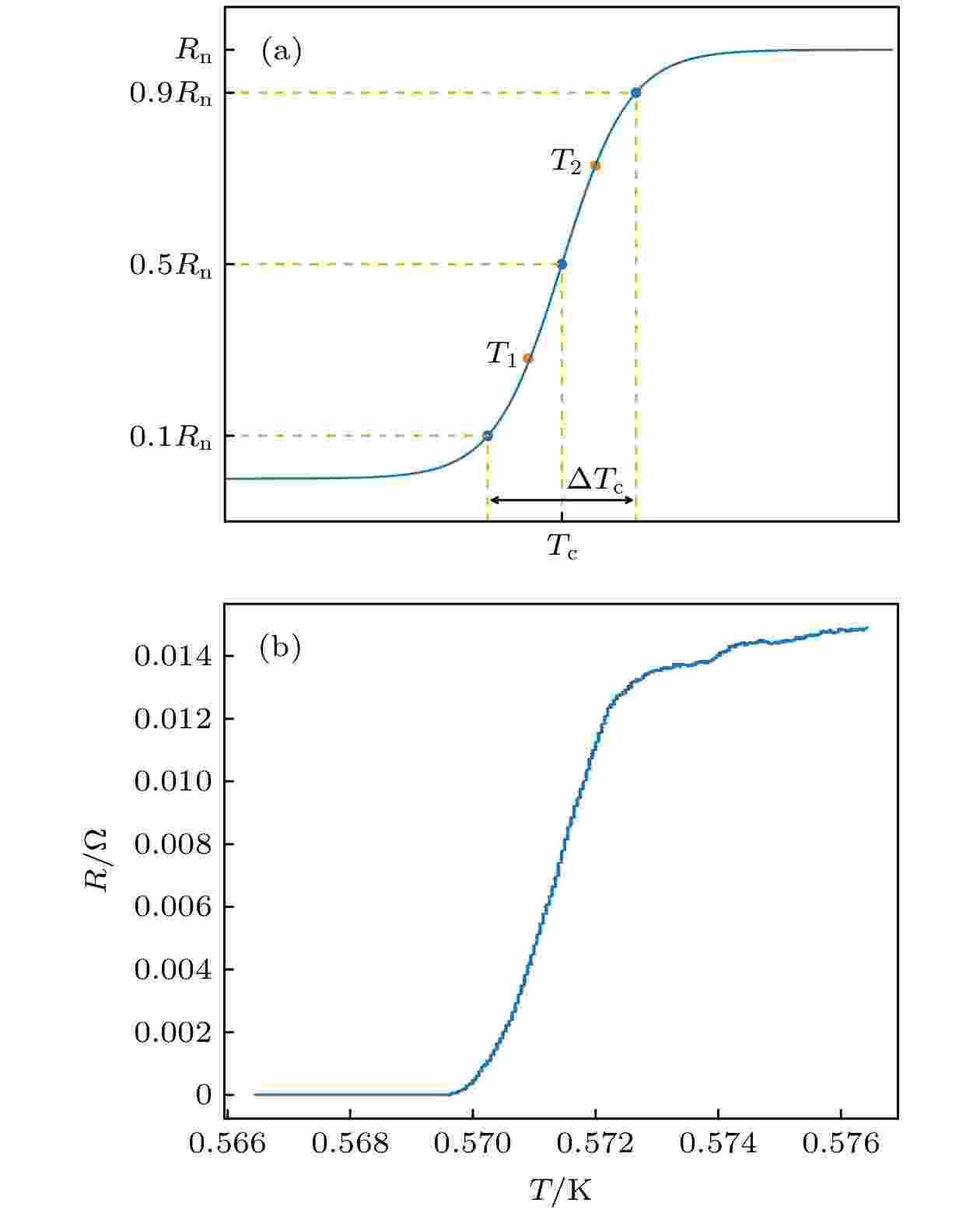
2022, 71 (15): 158502.
doi:10.7498/aps.71.20220335
Abstract +
Owing to its extremely low noise equivalent power, superconducting transition edge detectors have been widely used in various international cosmic microwave background polarization observation projects in recent years. In order to ensure that the detector works in the best performance range, the saturation power value of the detector needs to be adjusted according to the meteorological conditions of the observation site and the observation band, and the structural size of the detector beam directly determines the saturation power. Owing to process differences and other reasons, the beam sizes obtained under different processing schemes often cannot be directly used for horizontal comparison. In previous observation projects, a series of devices with different sizes were generally processed and measured one by one, and then the actual required size was inferred by fitting the relationship between the measured saturated power and the beam size. In order to match the target value, multiple machining iterations are often required. In this work, the boundary-restricted phonon transport model is used to successfully integrate the device parameters from previous observation projects to estimate the size of the transition edge sensor (TES) beam. According to the estimated value, the TES detector chips for detecting cosmic microwave background polarization signal are fabricated for the first time in China. Measurements show that its parameters deviate slightly from the target value. This method can well estimate the sizes of similar TES detectors, and thus has guiding significance for designing TES detectors in the future.
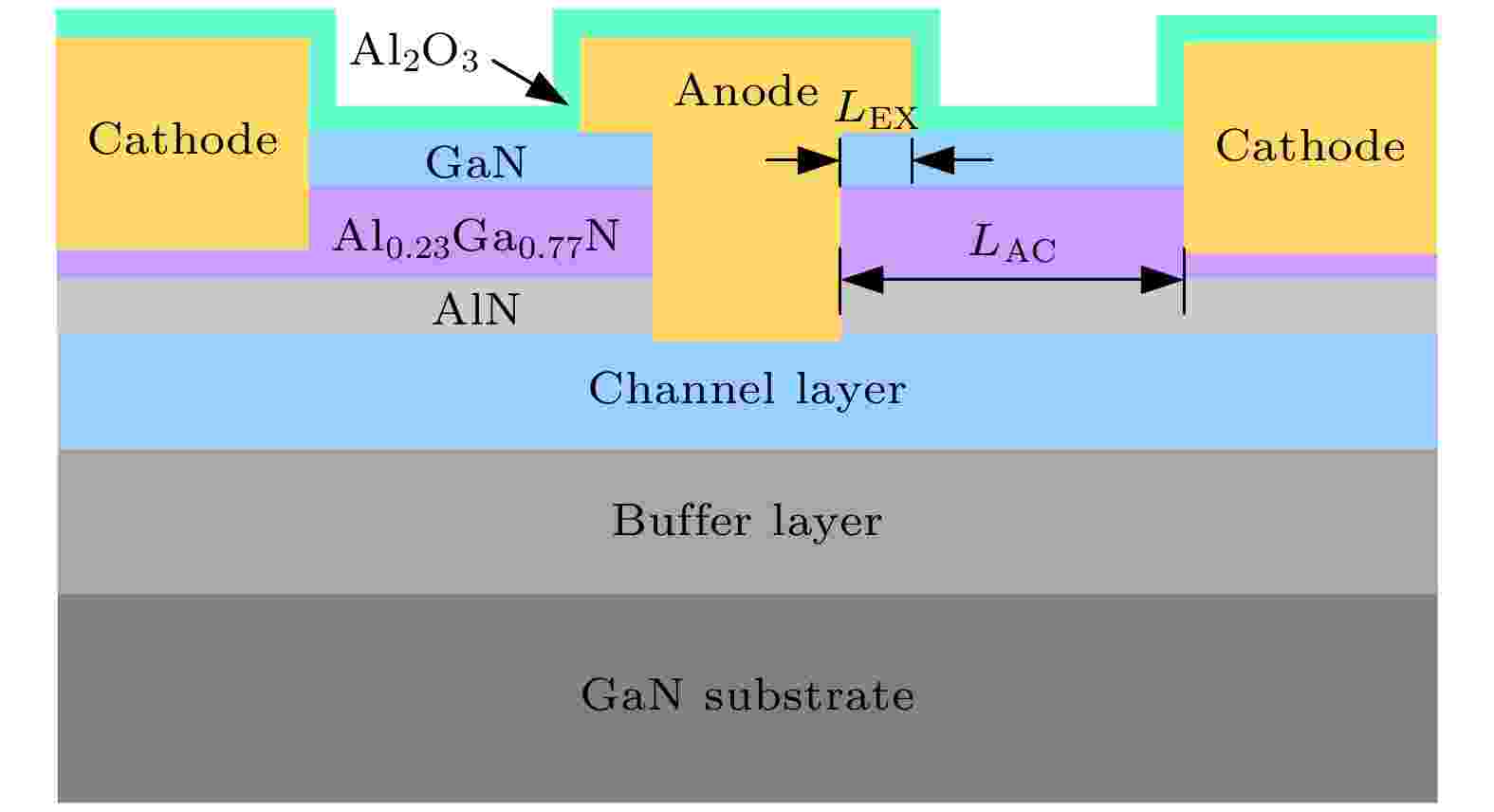
EDITOR'S SUGGESTION
2022, 71 (15): 158503.
doi:10.7498/aps.71.20220161
Abstract +
Benefiting from the excellent properties of GaN with a wide bandgap of 3.4 eV as well as high critical field of 3.3 MV/cm, GaN-based devices prove to be a promising candidate in extreme conditions. Especially, high-density high-mobility two-dimensional electron gas (2DEG) induced by spontaneous piezoelectric polarization in AlGaN/GaN heterostructure enables AlGaN/GaN device to lower on-resistance (RON). However, owing to the lack of free-standing GaN substrate with large size and high quality, the epitaxis of GaN is always based on hetero-substrate such as Al2O3, Si and SiC, which shows large lattice mismatch and thermal mismatch. The large mismatch between GaN and substrate leads to high dislocation as well as high leakage current (IR) of GaN devices. In this work, high-performance AlGaN/GaN Schottky barrier diode with lowIRand low turn-on voltage (VON) is fabricated on a 3-inch free-standing GaN substrate with C-doping GaN buffer layer to suppressIR. Owing to the suppressed dislocation density of the AlGaN/GaN epitaxial wafer on free-standing substrate, low Ohmic contact resistance (RC) is difficult to achieve the suppressed penetration of Ohmic metal into 2DEG channel, which is adverse to the high current density. In this work, a lowRCof 0.37 Ω·mm is obtained by one-step self-aligned Ohmic process, including the etching of partial AlGaN barrier layer and lift-off of Ohmic metal. The 2DEG is formed under the effect of residual AlGaN barrier layer, and the short distance between 2DEG and Ohmic metal contributes to lowering the value ofRC. The groove anode region is defined by the low damaged inductively coupled plasma process with a low etching rate of 1 nm/min, and the total depth is 35 nm, confirmed by atomic force microscope. Fully removing the AlGaN barrier layer from the anode region makes the anode metal directly contact the 2DEG channel, thereby improving the performance of the fabricated AlGaN/GaN Schottky barrier diode (SBD) with a lowVONof 0.67 V, lowIRof 3.6 × 10–8A/mm, and anION/IOFFratio of up to 3 × 107. The values of differentialRON,spare calculated to be 0.44, 0.86, 1.59, 2.55 mΩ·cm2for GaN SBDs with various values ofLACof 6, 10, 15, 20 μm, and the values ofRON,spdetermined at an anode current density of 100 mA/mm are 1.27, 2.08, 3.29, 4.63 mΩ·cm2, respectively. As the measured temperature increases from 300 to 425 K, theIRis increased only by 3 times to 1.6 × 10–7A/mm, which shows the great potential for next-generation power electronics.
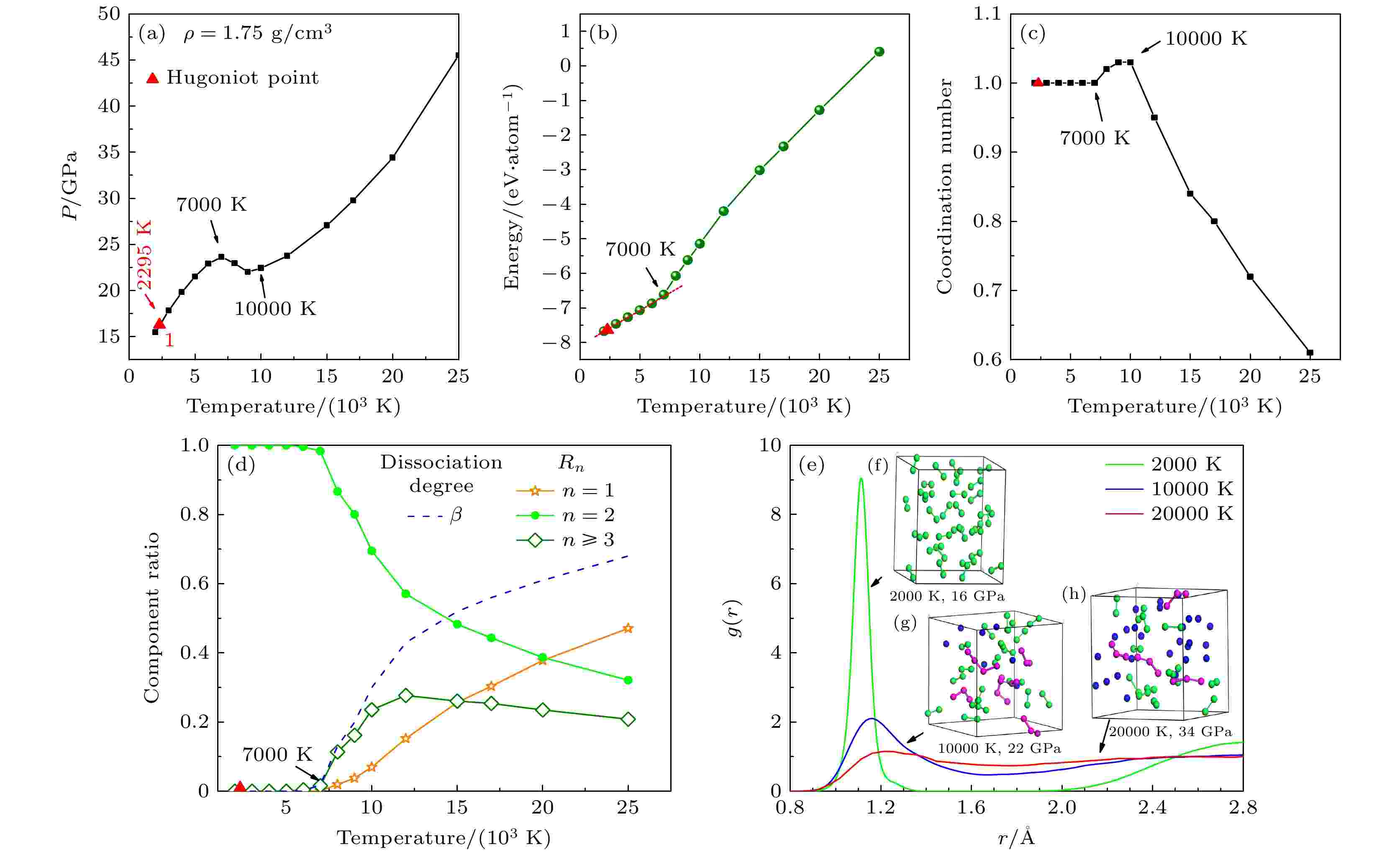
2022, 71 (15): 158701.
doi:10.7498/aps.71.20220124
Abstract +
Nitrogen is the main reaction and detonation product of energetic materials. Therefore, studying the equation of state and phase transition of nitrogen at high temperature and high pressure is very important in evaluating the energy characteristics of energetic materials, especially in designing a new-generation nitrogen-rich energetic materials. Using density functional molecular dynamics simulation method, we calculate the pressure, internal energy and chemical components of fluid nitrogen in a temperature range of 900–25000 K and a pressure range of 2–300 GPa. The negative changes of pressure with temperature on isochores are observed under the temperature and pressure conditions of 3000–10000 K and 20–80 GPa. As the temperature increases, the pressure drop is caused by the collapse of nitrogen molecules. This phenomenon is related to the phase transition from molecular fluid nitrogen to polymerized fluid nitrogen. The triple bond in the molecule breaks and a polymer forms, which is connected by single and double bonds with neighboring atom. We also study the equation of state along Hugoniot curve under impact loading. The obtained Hugoniot curve is in good agreement with the experimental results. It is found that the softening of the experimental curve in a range of 30–60 GPa is related to the decomposition of nitrogen molecules and the formation of polymeric nitrogen.
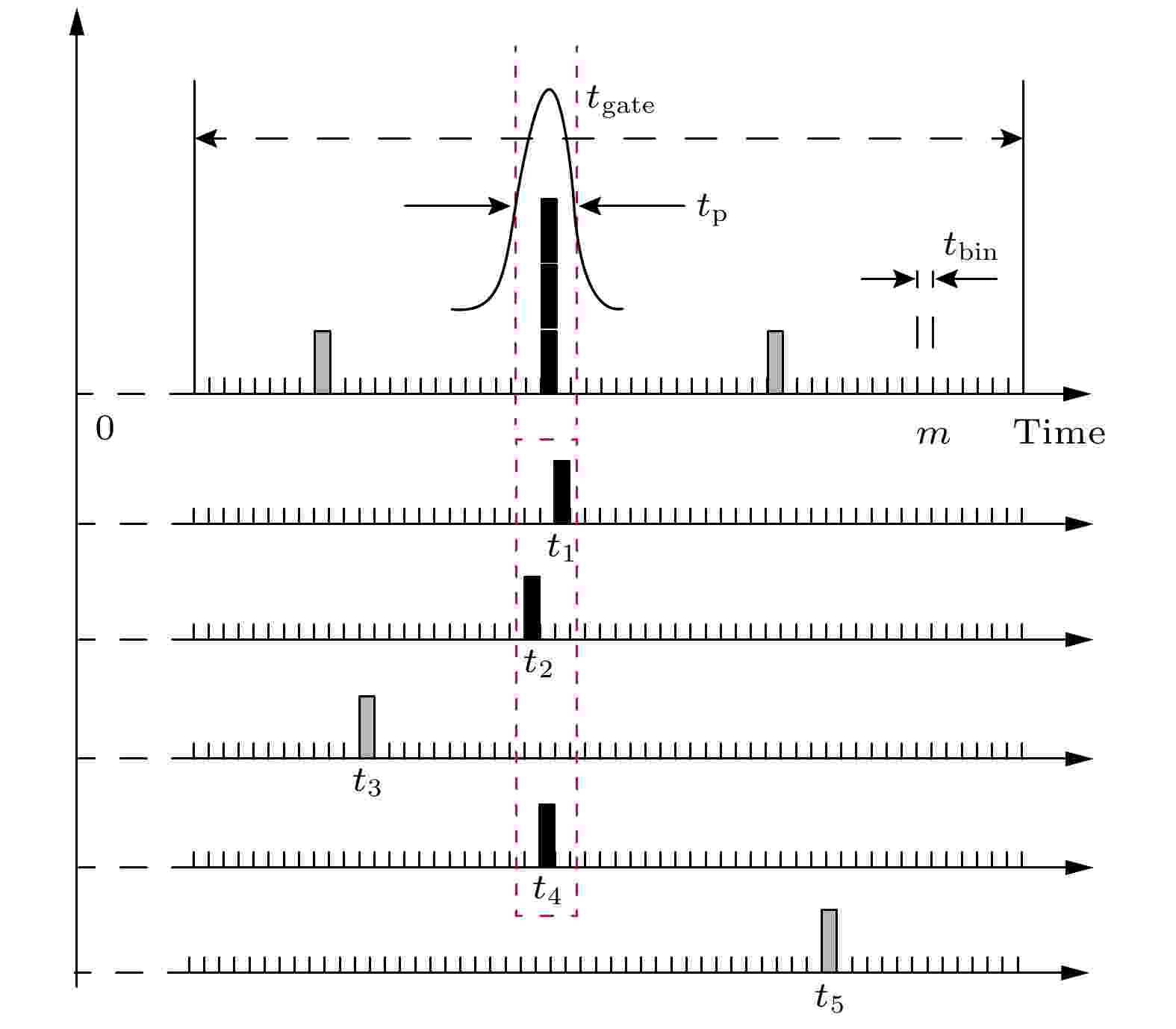
2022, 71 (15): 158702.
doi:10.7498/aps.71.20220173
Abstract +
Photon counting imaging system has recently received a lot of attention in ultra-weak light detection. It has high sensitivity and temporal resolution. The single-point scanning photon counting imaging system typically accumulates a large number of photon events to reconstruct depth image. Acquisition time is redundant or insufficient, which limits imaging efficiency. In this work, a new method called adaptive acquisition time scanning method (AATSM) is proposed to solve this dilemma. Comparing with the fixed acquisition time of every pixel, the method can automatically select the acquisition time of per pixel to reduce total time of data collecting while obtaining depth images. In experiment, we acquire the depth images with the same quality by different scanning methods, showing the feasibility of AATSM. The total time of collecting data by the AATSM can be reduced to 11.87%, compared with fixed acquisition time of every pixel. This demonstrates the capability of speed scanning of AATSM, which can be used for the fast imaging of photon counting system.

EDITOR'S SUGGESTION
2022, 71 (15): 158801.
doi:10.7498/aps.71.20220354
Abstract +
Molten salt is regarded as one of most promising candidates for solar energy storage due to possessing stable properties and large energy storage densities. However, the intrinsically low thermal conductivity of molten salt has become a bottleneck for rapid heat storage and transport. The addition of nanoparticles is generally considered to be a most effective way to improve the thermal conductivity of molten salt phase change materials (PCMs), while the phase change enthalpies of the nanocomposite phase change materials usually show two opposite trends of enhancement or decrement. Furthermore, the reason for the abnormal change of phase change enthalpy has not been clear in the literature so far, so the mechanism of change needs to be further explored. In this work, graphene nanosheets (GNS)@NaNO3(sodium nitrate) nanocomposite phase change materials are prepared by the hydration ultrasonic method. The materials are characterized by scanning electron microscope, and the phase change characteristics are measured using differential scanning calorimeter. Molecular dynamics simulation is carried out to explain the mechanism for the formation of the NaNO3dense layer and the non-collateral decrease of the enthalpy from the microscopic level. With the increase of GNS mass fraction, the melting point of the GNS@NaNO3composite phase change material decreases slightly while the phase change enthalpy decreases significantly with a non-colligative trend. A 13.81% decrease of the theoretical phase change enthalpy is observed with a GNS doping ratio of 1.5%. The NaNO3clusters observed on the surface of GNS are considered to have not melted, thereby resulting in a reduction in the phase change enthalpy. The mechanism is further investigated by molecular dynamics simulation, showing that the strong van der Waals attraction between GNS and NaNO3leads the 2–4 Å-thick NaNO3dense layer to form in the vicinity of GNS. With the increase of GNS mass fraction, the centroid equivalent distance between the dense layer and GNS gradually increases, which leads their mutual attraction to first increase and then weaken. When GNS mass fraction is 1.5%, the centroid equivalent distance reaches the position closest to the potential well, leading to a strongest mutual attraction. In other words, the phase change enthalpy decreases most obviously at this mass fraction. Thus, some conclusions can be drawn as follows. The type of interaction between molten salt and nano-enhancers and the position of the potential well are the fundamental reasons for the thickness of molten salt dense layer and the reduction of phase change enthalpy. The calculation of the interaction energy can be used to guide the selection of the mass fraction of the nano-enhancers, so as to avoid the loss of core material cluster and phase change enthalpy caused by the introduction of the nano-enhancers to a greatest extent. The preparation cost of the composite phase change material can also be reduced to a certain extent.
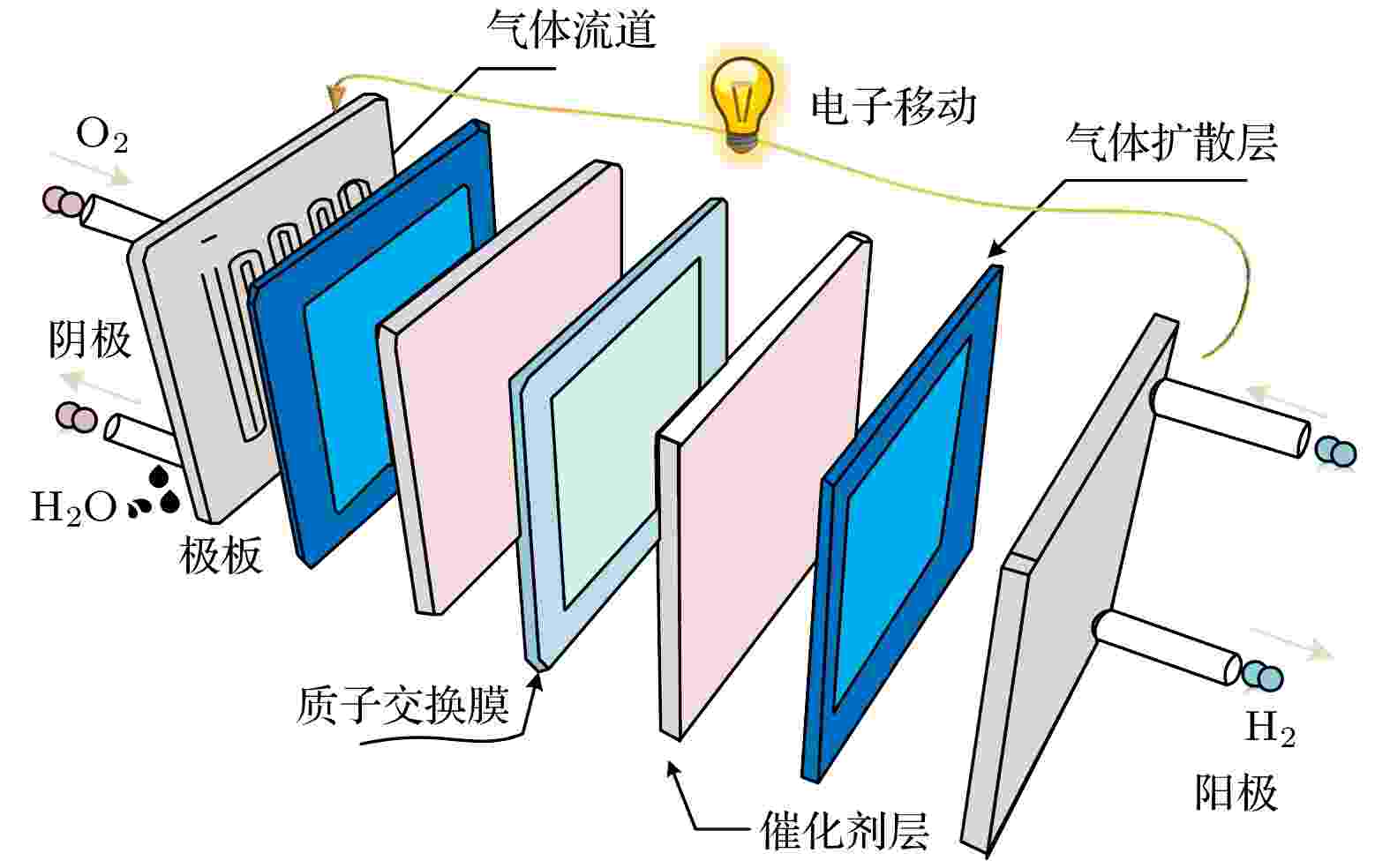
2022, 71 (15): 158802.
doi:10.7498/aps.71.20212015
Abstract +
The current research on the dynamic performance of the proton exchange fuel cell is mostly aimed at the influence of operating parameters on the system, but does not involve with the dynamic characteristics of the cell on a multiple time scale nor the study of the corresponding multiple time scale model. In order to detect the dynamic changes of the proton exchange membrane fuel cell, the effects of various factors in the system on the output performance on different time scales are investigated. The effective partial pressure of oxygen and hydrogen are obtained by the mass diffusion equation and the ideal gas state equation, and the dynamic model is established according to the law of conservation of energy, the law of thermodynamics, and the electrochemical reaction equation. By setting the load mutations with a large/medium/small time scale dynamic duration of 0.6 s, 165 s, and16 min, respectively, the mechanism with which voltage suddenly changes when the load current changes abruptly is studied. Starting from the long time constant during which the dynamic performance takes effect, the control variable is used to analyze the double-layer charge. The influences of layer effect capacitanceC, fuel oxidant delay time constantτe, and thermodynamic characteristics (temperatureT) on the dynamic performance ( initial values of variables:C= 4 F,τe= 80 s, andT= 307.7 K) clarify the action intensities on different time scales. With the help of Matlab/Sumlink platform the simulation results are obtained and the correctness and effectiveness of the built model are verified. The simulation results show that the sudden change in voltage is due to the open circuit voltage and Ohmic polarization resistance, and the Ohmic resistance is dominant (the Ohmic overvoltage change value is 2 V, and the open circuit voltage change is 0.05 V), and theCpair dynamics on a small time scale (ms). The performance plays a leading role. Specifically,τehas a greater effect on the dynamic characteristics on a medium time scale (s), andThas a stronger effect on a large time scale (102–103s). Based on the above deduction, a multi-time scale model of the battery is derived. The research provides the reference and theoretical support for subsequent battery energy management, evaluation of dynamic performance, and precise control.
GEOPHYSICS, ASTRONOMY, AND ASTROPHYSICS

2022, 71 (15): 159101.
doi:10.7498/aps.71.20220267
Abstract +
The information about Earth’s gravity field is an important basic information necessarily for geodesy, geophysics, geodynamics and other disciplines. The mapping of gravity field is an effective mean to obtain the gravity field information. Compared with the surveying of gravity field based on satellite, ship, and airplane, vehicle-mounted gravity mapping has advantages of strong flexibility, high spatial resolution and high accuracy. A short baseline or a small-scale gravity field mapping can be realized based on the combination of relative gravimeters and the high-precision absolute gravity reference point. However, this method is not suitable for the situation of a long baseline or a large-scale gravity field surveying due to the drift of relative gravimeter. In this work, a vehicle-mounted system for rapid surveying of the absolute gravity field is built up based on a miniaturized atomic gravimeter. The inner precision of the instrument is evaluated to be 0.123 mGal, and the outer precision is 0.112 mGal in a field test which contains 12 points for 3 km distance. Furthermore, with this system, the absolute gravity data are obatined within 2 min for adjusting and 5 min for measuring in downtown for each measured point. A rapid surveying of absolute gravity field for 19 points is carried out and the route covers 24 km. The inner precision of the instrument is evaluated to be 0.162 mGal, and the outer precision is 0.169 mGal. Finally, the free-air gravity anomalies obtained from the measured data of atomic gravimeter and the fitting results of satellite gravity model are analyzed, and it is found that the trends of changing are basically consistent with each other. This paper provides a new proposal for the rapid surveying of the absolute gravity field.
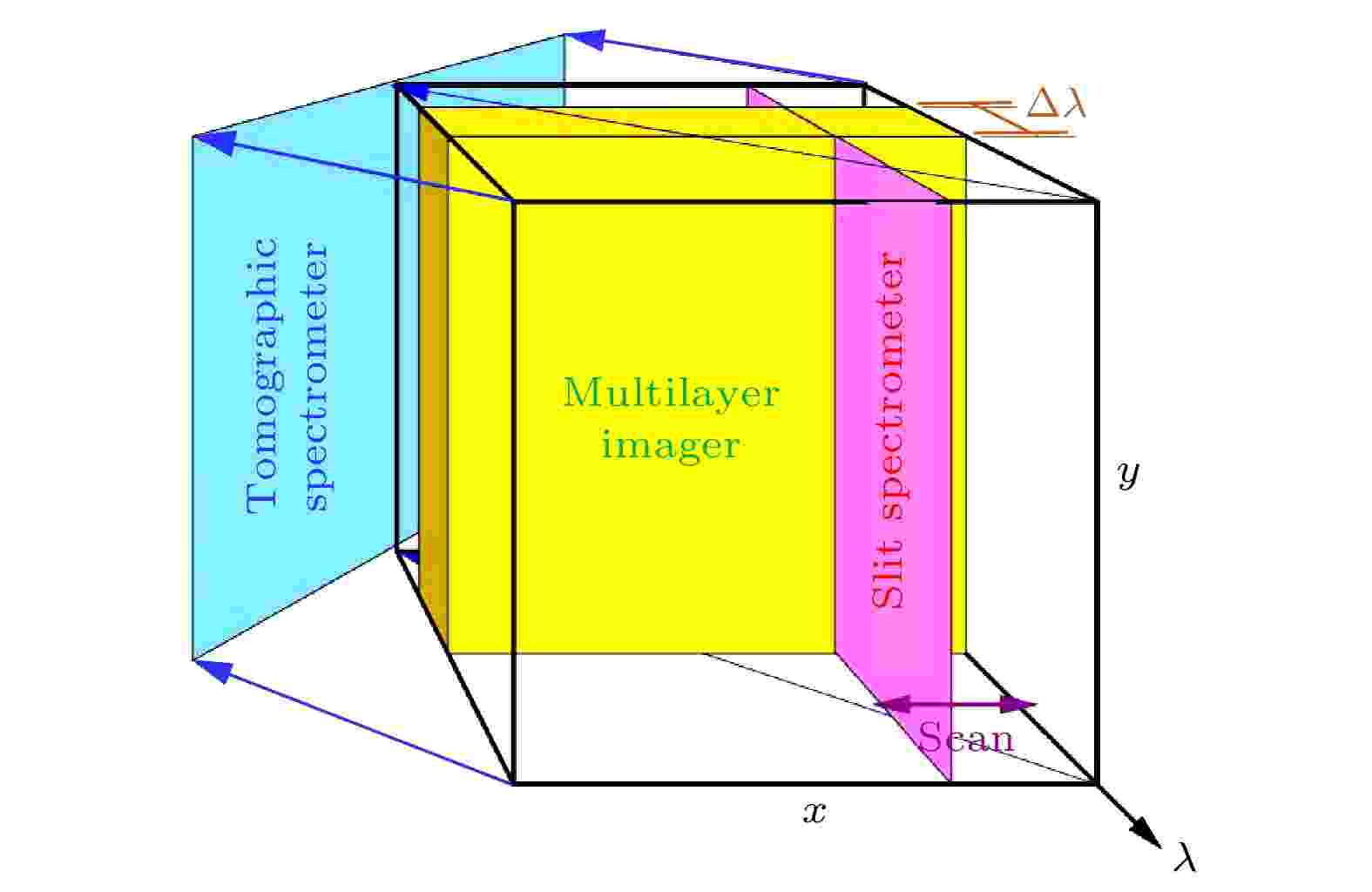
2022, 71 (15): 159501.
doi:10.7498/aps.71.20220084
Abstract +
Highly dynamic solar eruptive activities occurring over the corona and transition region, triggered off by magnetic field reconnection, are the driving source of disastrous space weather, and the space imaging and spectroscopic measurements of solar eruptive activities are a key data source for accurate space weather forecasting. The He II 30.4 nm resonance line comes from the Lymanαtransition of singly ionized helium, which has an anomalous intensity, an order of magnitude higher than the intensities of other transition region lines. In this paper, we propose and design a two-dimensional spectroscopic tomographic imaging instrument operating at He II 30.4 nm wavelength to make up for the shortcomings of conventional solar extreme ultraviolet imager and imaging spectrometer, and adopt a slitless three-order (–1, 0, +1) simultaneous diffraction imaging configuration with a single snapshot to achieve two-dimensional spectroscopy instantaneous imaging with a large field of view. Owing to the confusion of spatial and spectral information of the three orders of images, the three-dimensional data cubeI(x,y,λ) of the observed target is reconstructed using a spectral data inversion algorithm with a limited tomographic projection angle.
ERRATA
